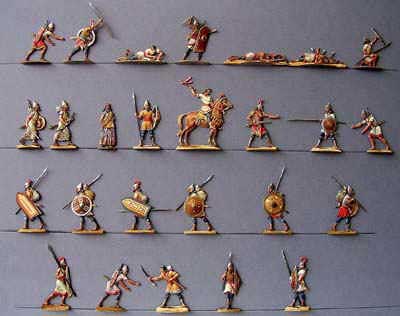
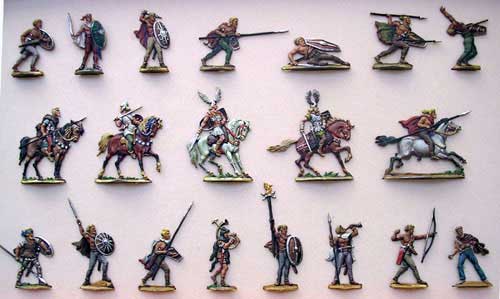
Assiri- Figure Gottstein, incisioni L.
Frank
(cliccare sull'immagine per ingrandire- click on image to enlarge)
Galli - figure Kilia - incisione L.Frank
|
TANTI PITTORI...TANTI STILI Una delle cose che
più aiuta a migliorare il proprio livello di pittura, è l'esame attento del modo di
dipingere di altri pittori. Ecco quindi in questa sezione non più figure dipinte da me, ma una galleria di pittori a livello mondiale.
|
MANY PAINTERS...MANY STYLES I am
convinced that a valid chance for improving one's painting level is the careful
examination of the way of working of the other painters. It is possible we have to learn
something even from painters which at first seem less skilled, maybe a way of shading or a
particular choice of colours. Therefore you will find in this section figures painted not by me, but by some painters of the past and of nowadays.
|
Vladimir Douchkine
| A mio avviso, Douchkine è uno dei più grandi
pittori di piatti, anche se i suoi lavori non sono particolarmente dettagliati, a
dimostrazione del fatto che non è detto che la ricerca maniacale del super dettaglio
porti sempre ad un ottimo piatto. Il suo stile si riconosce subito in quanto di effetto
molto pittorico: il modo suo di dipingere i cavalli è veramente eccezionale : peccato che
le foto non rendano abbastanza giustizia ad una mano veramente di grande livello.
Douchkine ha dipinto moltissimo e non tutta la sua produzione è della stessa qualità;
resta sempre valido comunque anche nei lavori più frettolosi, se non altro per il modo
come ci insegna a dare l'idea, senza cincischiamenti. Singolare è l'utilizzo dei colori metallici per oro e argento, sistema di solito disdegnato dai teorici dei piatti. Per maggiori notizie su questo pittore, rimando al sito di Alexander Baden (vedi LINKS di questo sito). |
In my opinion, Douchkine is one of the best
painters of flat figures, even if his works are not particularly detailed: this is a
demonstration of the fact that a good flat painting it is not the result of a maniacal
research of details. Douchkine's style is easily recognizable due to his very personal
pictoric look: is way of painting horses is really extraordinary. It is a pity that the
photos cannot duly describe the level of painting. Douchkine painted a lot of figures during his life and not all the figures are of the same quality; however, even the fast painted figures remain valid for the way he succeed to give the idea to the observer, without dawdling. He used with great skill also metallic paints for gold and silver, while these means are usually rejected by flat painting canons. For further information about this painter, please visit Alexander Baden website (see also LINKS of this website) |
|
|
 |
|
Assiri- Figure Gottstein, incisioni L.
Frank |
Galli - figure Kilia - incisione L.Frank |
|
|
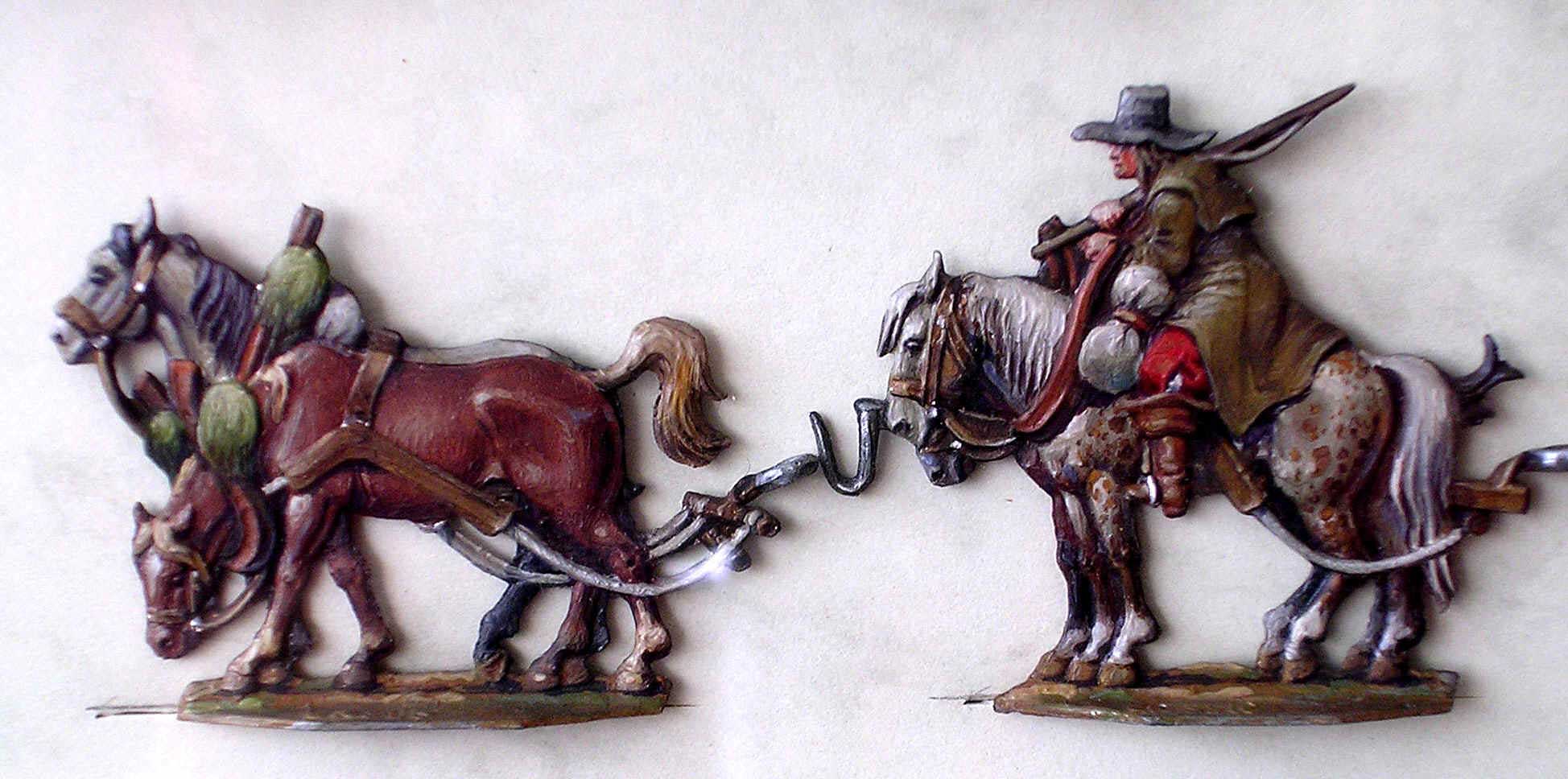 |
|
Guerra dei 30 anni - Figure Muller (Wunsch) e Kilia(Ochel) |
|
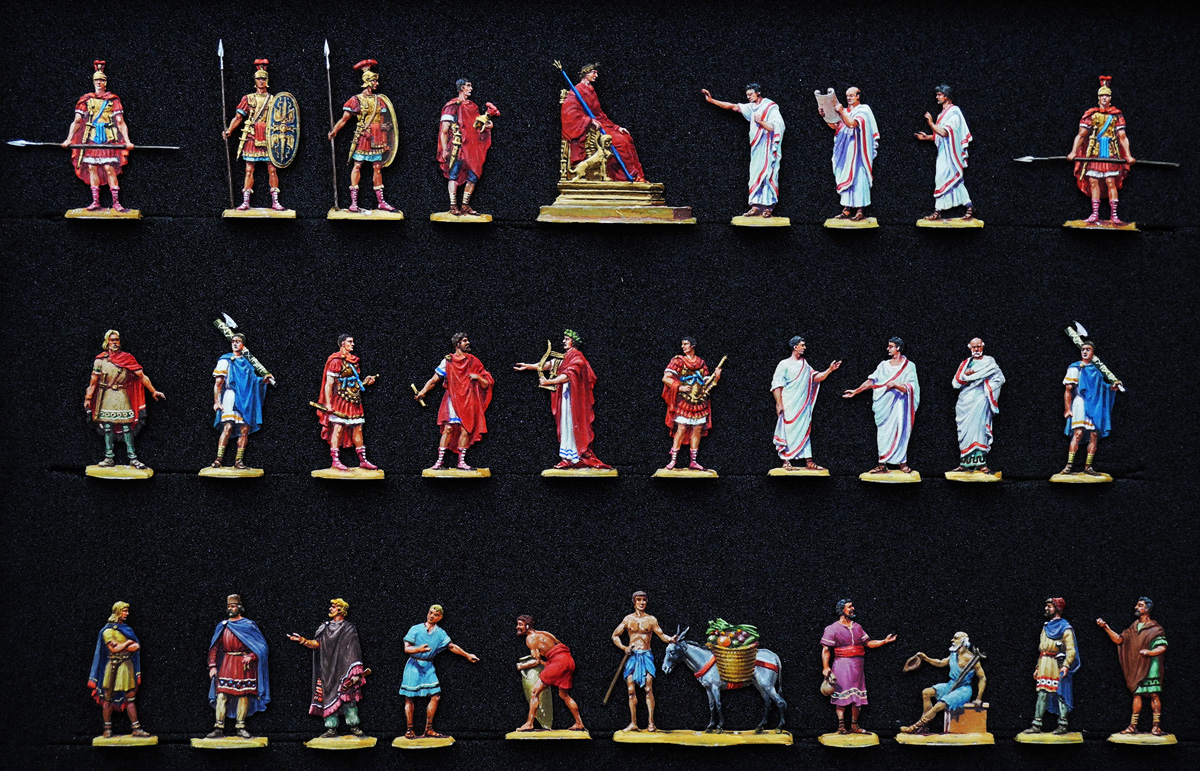 |
|
Roma - Caesar et Senatores (figure Neckel) |
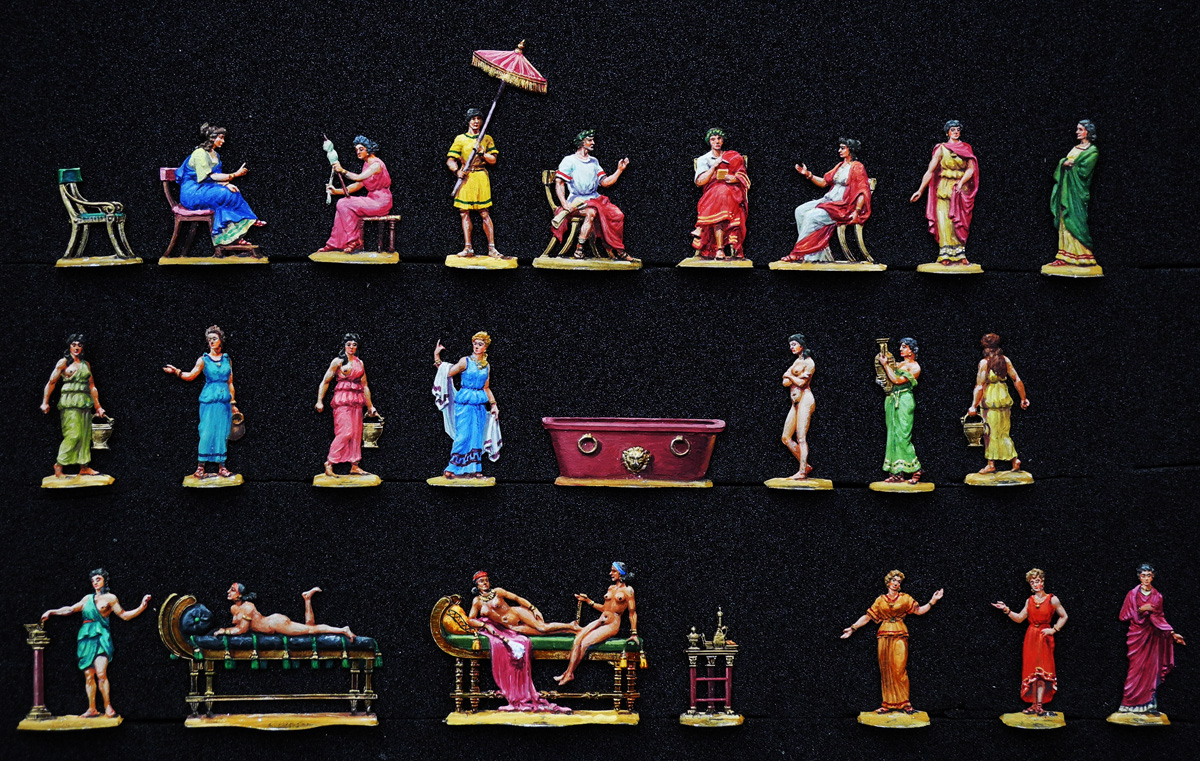 |
|
Roma- vita quotidiana (everydays' life)- Figure Neckel |
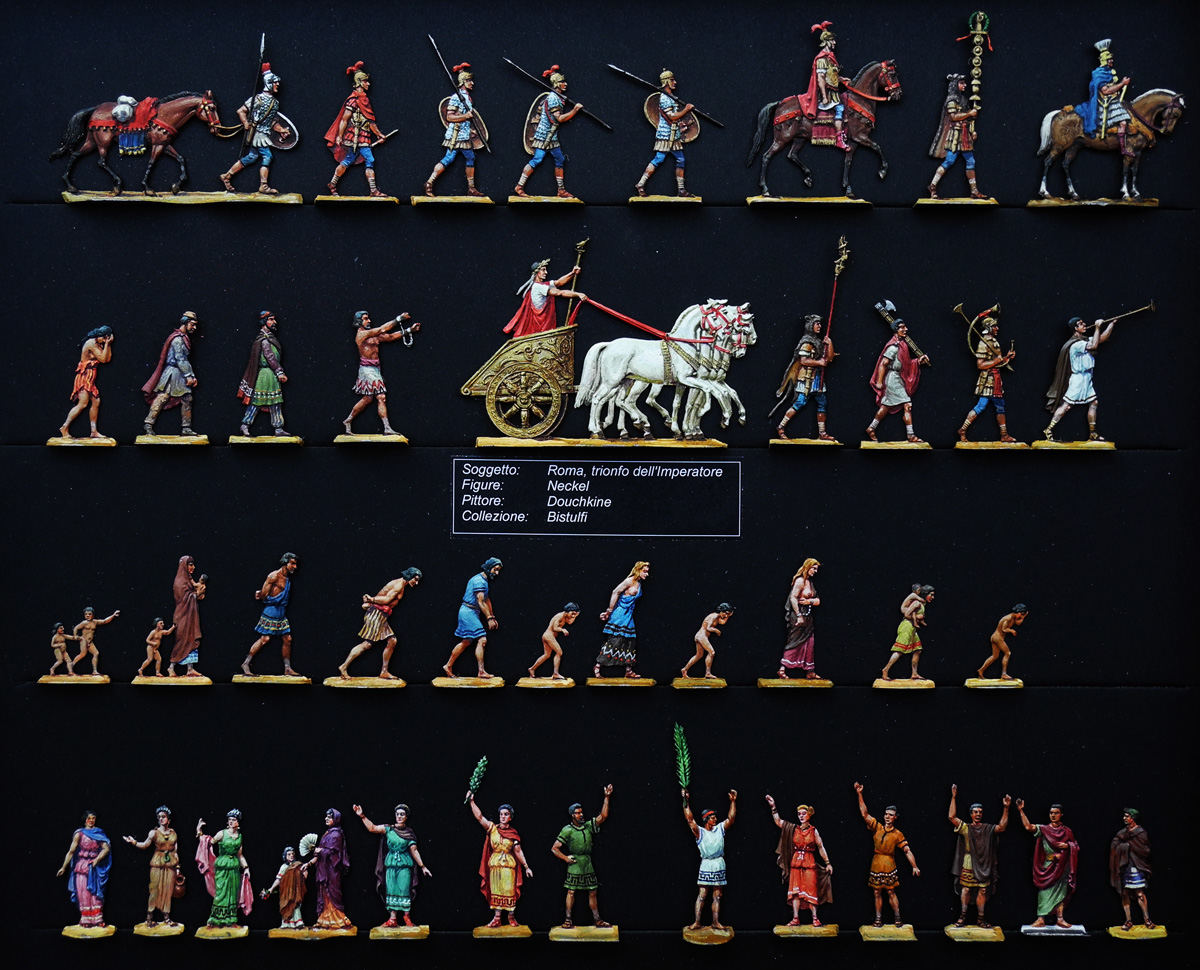 |
|
Roma, trionfo dell'imperatore - Figure Neckel (Emperator's triumph) |
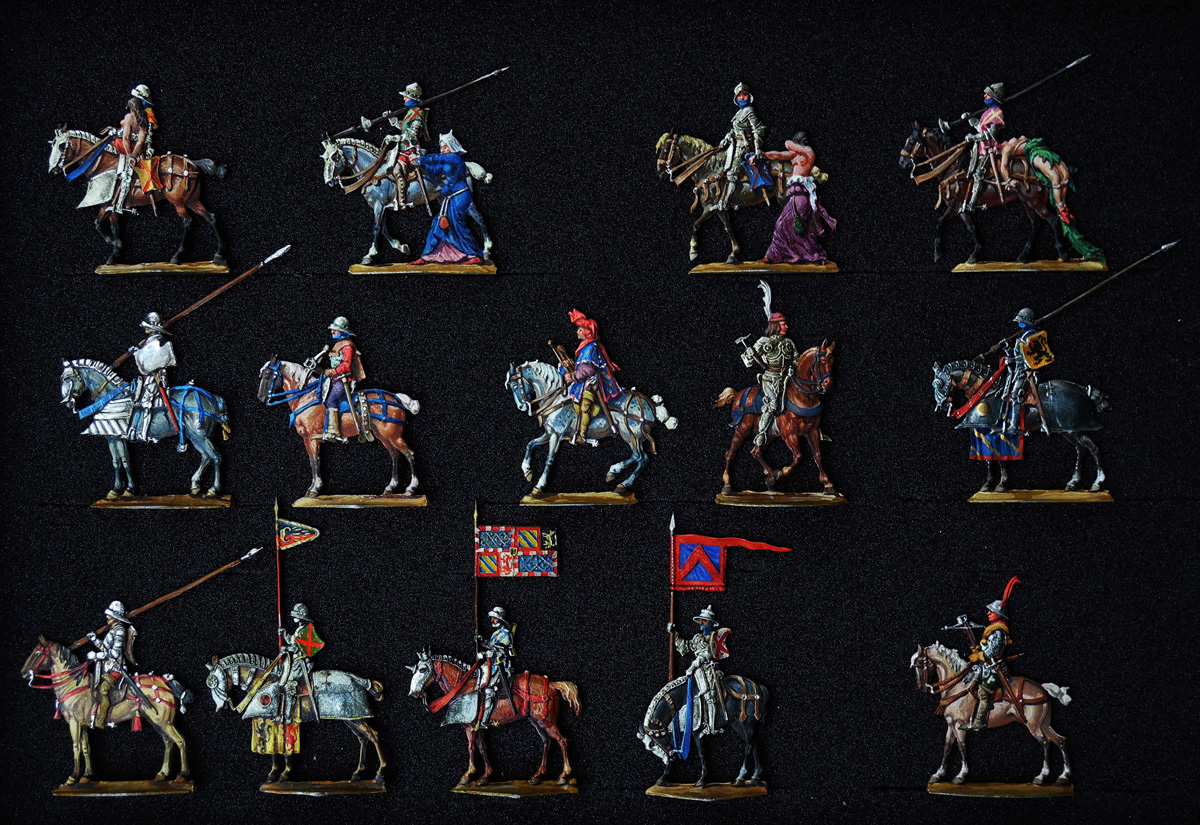 |
|
Borgognoni - Figure Gottstein |
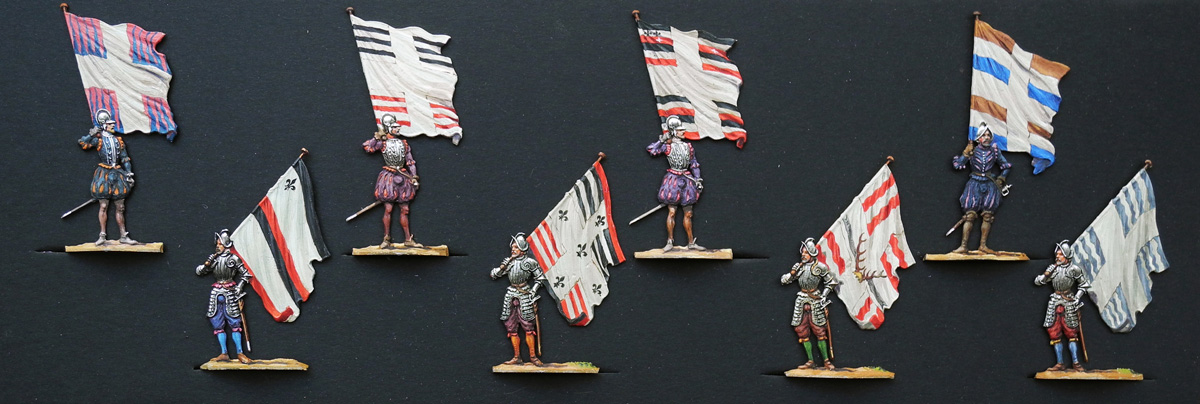 |
|
Bandiere francesi alla battaglia di S. Quintin -figure Mignot |
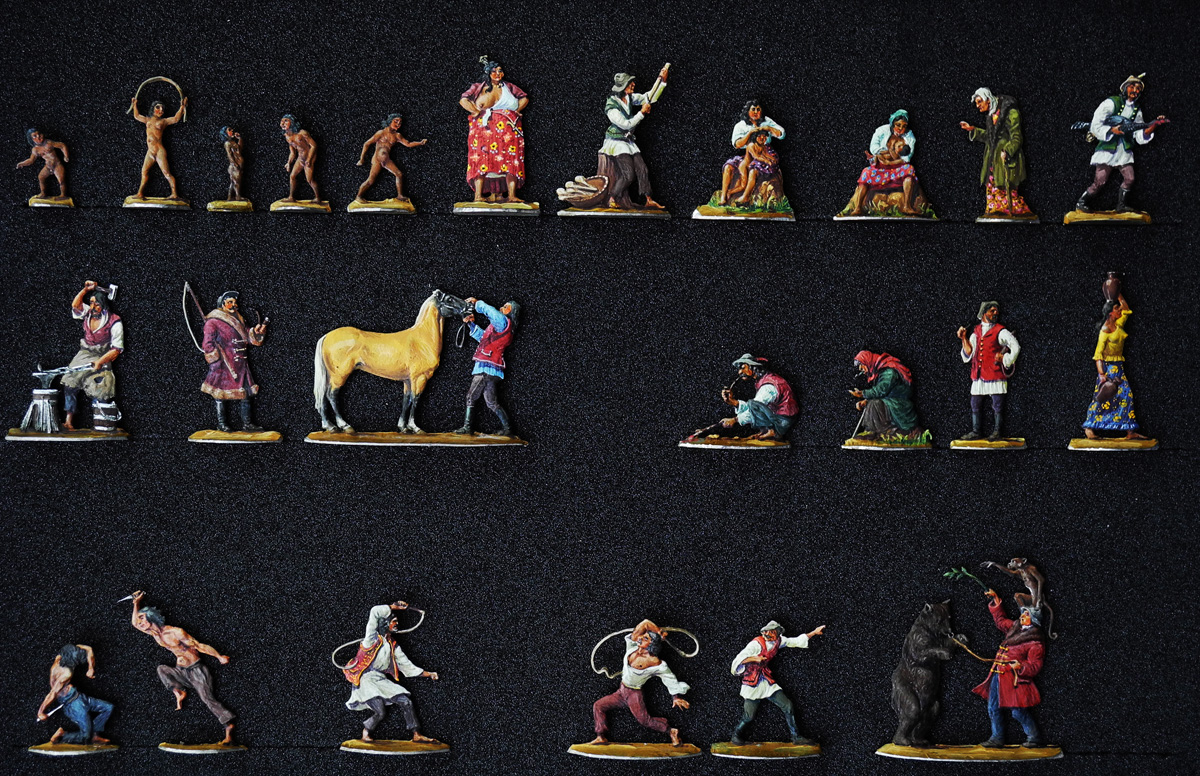 |
|
Zingari - Figure Mohr |
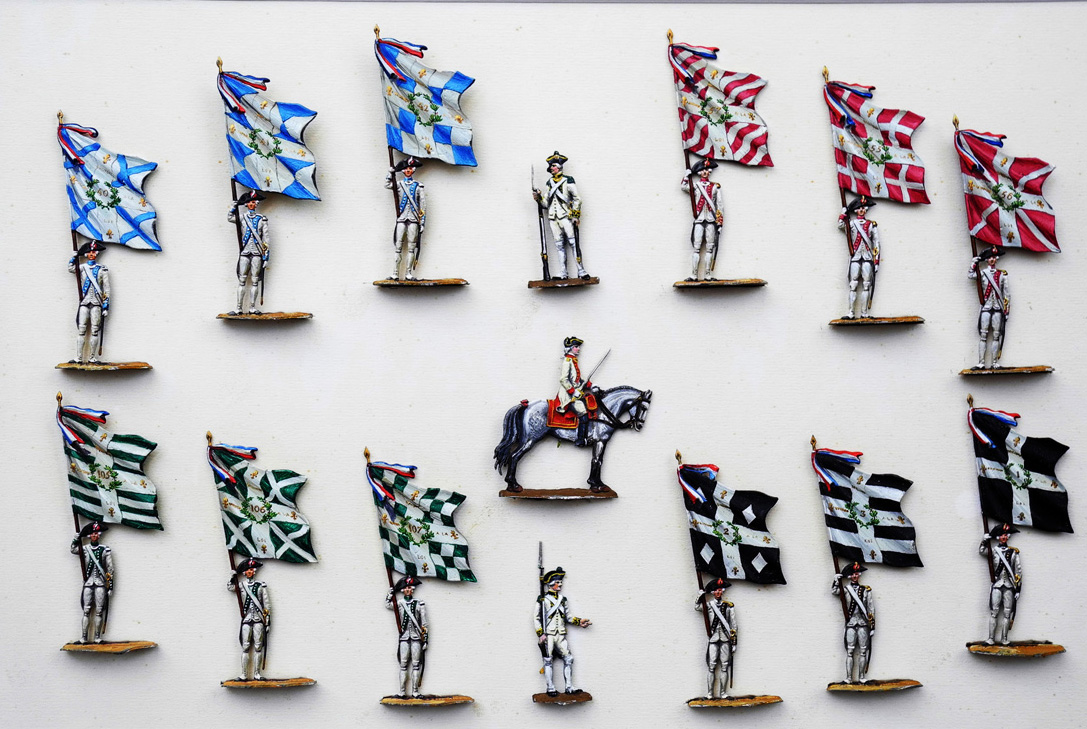 |
|
Bandiere francesi della Rivoluzione (figure Brandt)- French Revolutionary Flags |
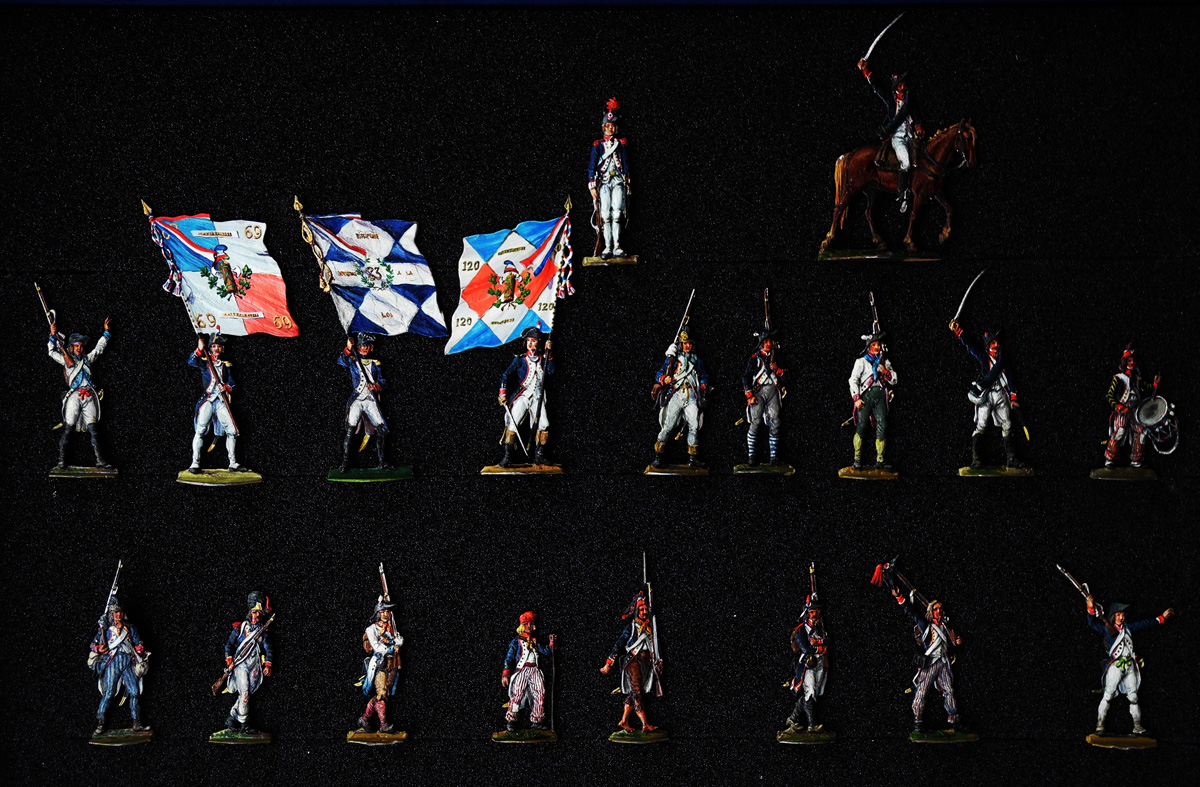 |
|
La Marsillaise (incisione Frank-Editore Terana) |
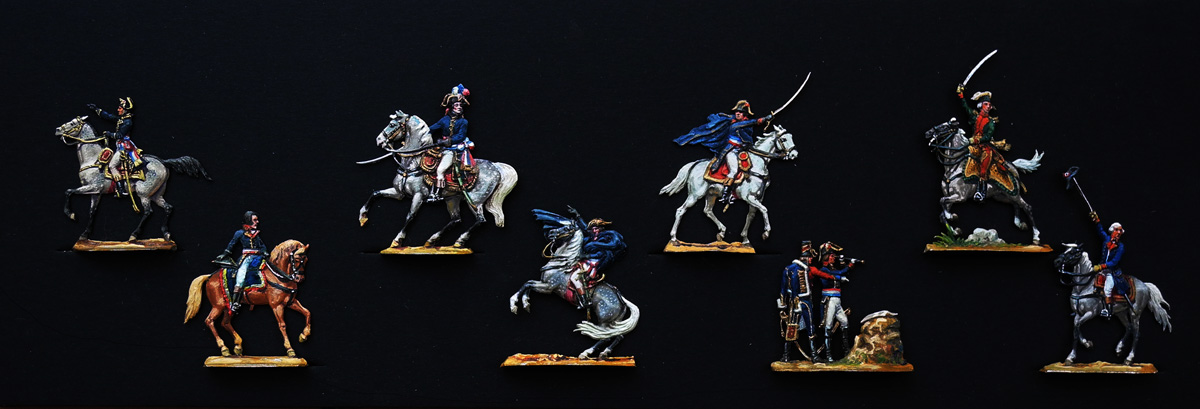 |
|
Napoleone e generali |
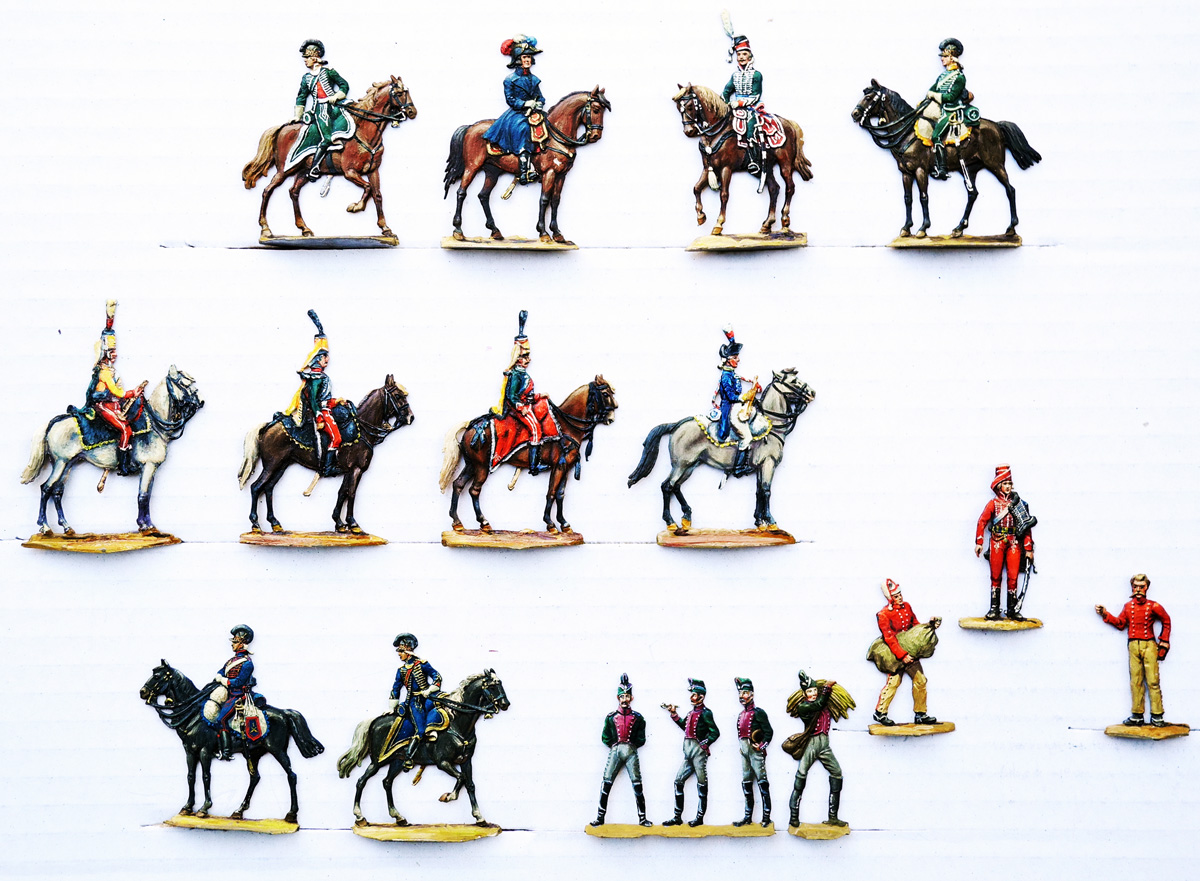 |
|
Francia, Cacciatori e ussari (figure Thiel, Kilia, Heinrichsen) |
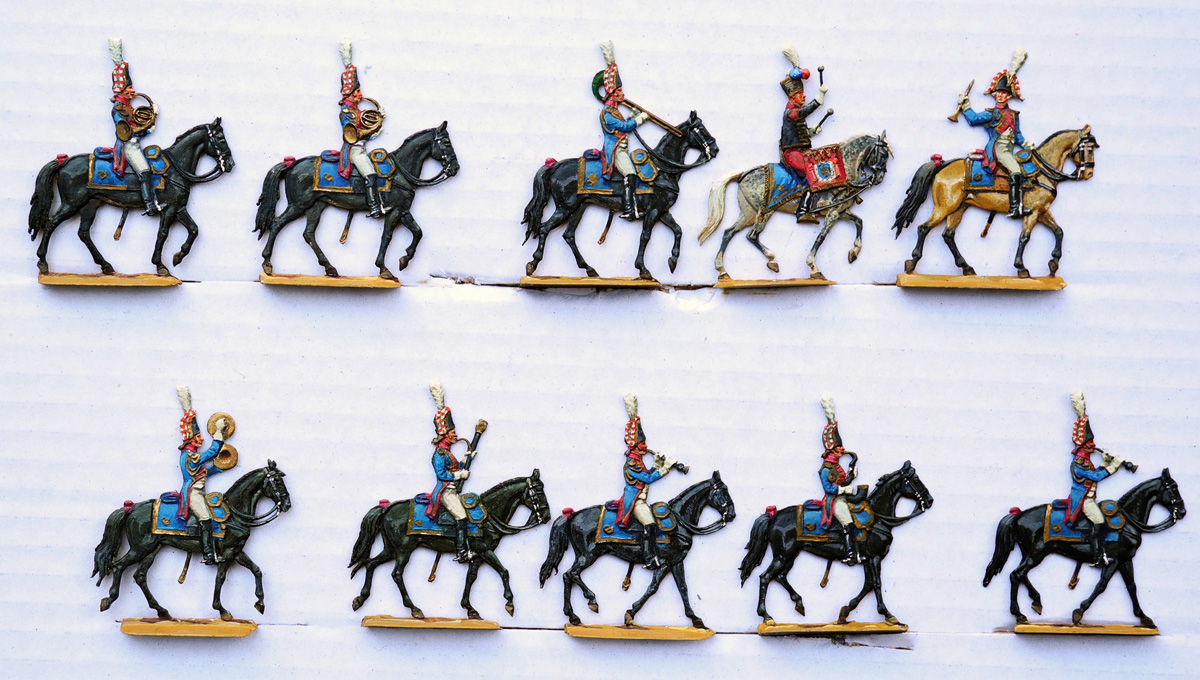 |
| Francia, banda dei Granatieri a cavallo (figure ex-Neckel) |
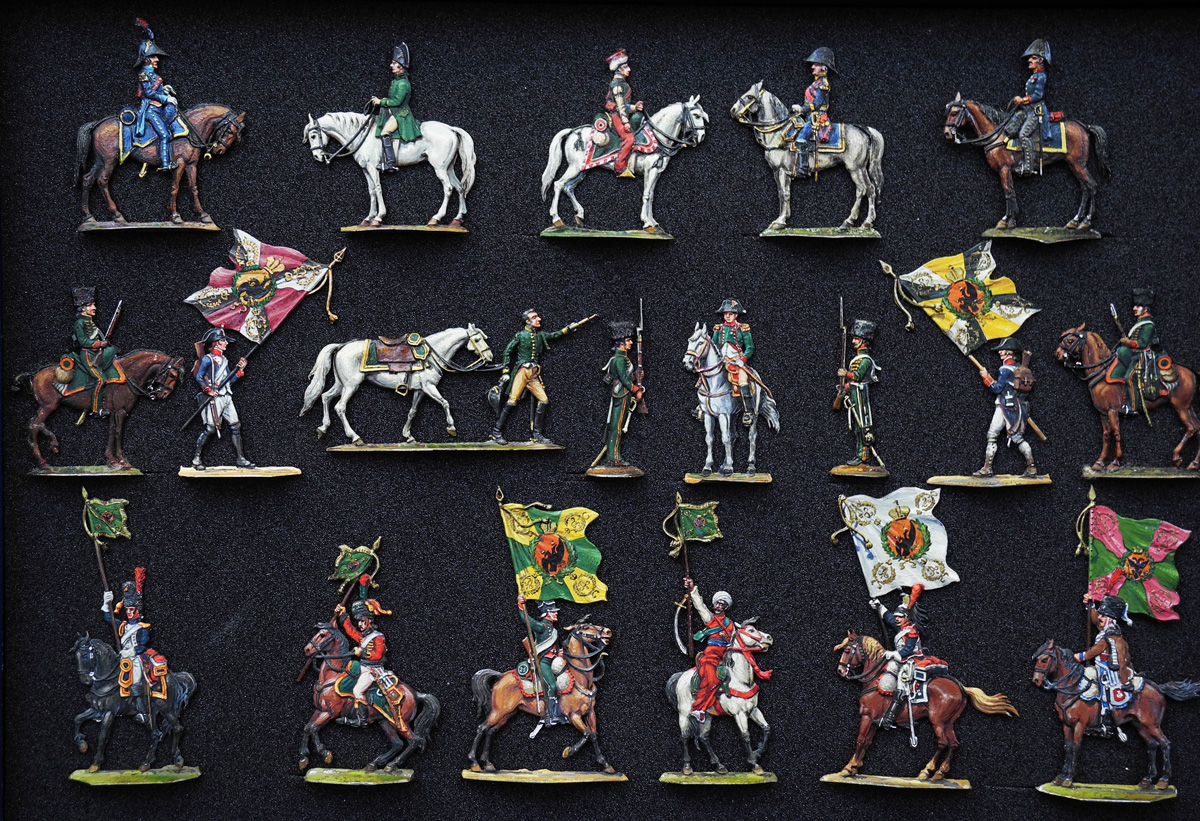 |
|
Austerlitz - figure Maier e altri |
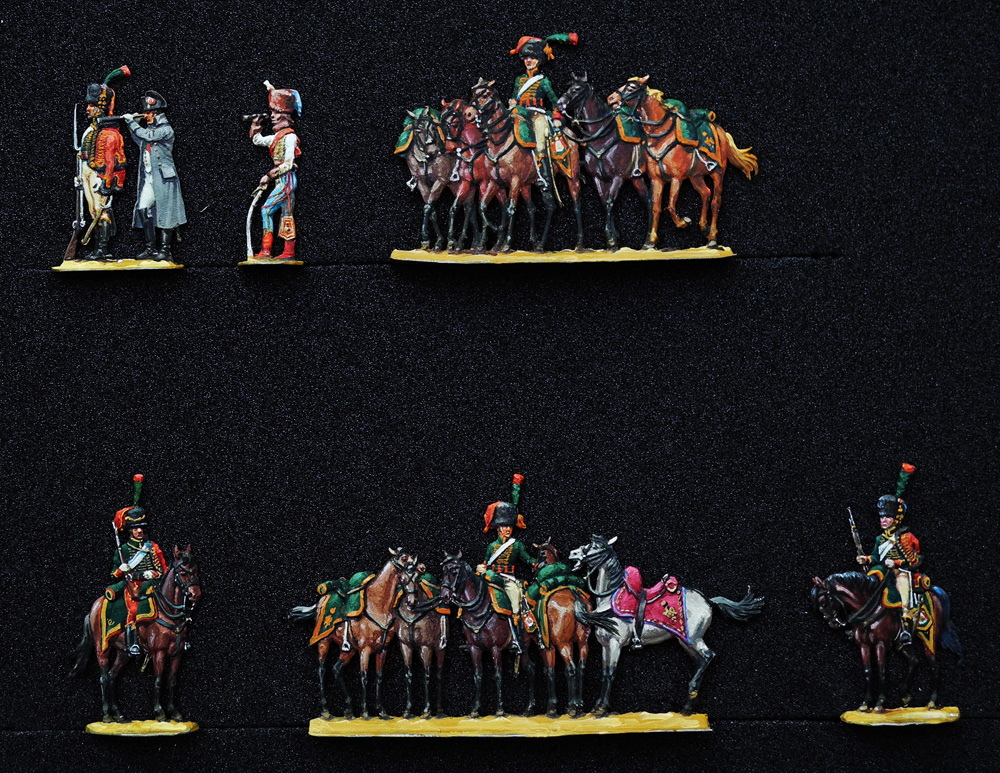 |
|
Cacciatori a cavallo |
Gianfranco Speranza
| Sicuramente è uno dei migliori pittori attuali. Preciso nei toni e nei dettagli, ha un ottimo controllo dei colori e delle sfumature. Ha collezionato una quantità di premi a mostre e concorsi. | Surely one of the best living painters. Accurate in tones and details, has a very good control af colours and shades. He collected a quantity of medals in competitions and exhibitions |
|
Bivacco di Lanzichenecchi: figure dipinte da G. Speranza, fondale dipinto da Serge Franzoia (cliccare sull'immagine per ingrandire) |
Banchetto medioevale (cliccare sull'immagine per ingrandire) |
|
Bonaparte alle Piramidi: celebre serie di Mohr, dipinta magistralmente da G. Speranza (cliccare sulle immagini per ingrandire) |
|
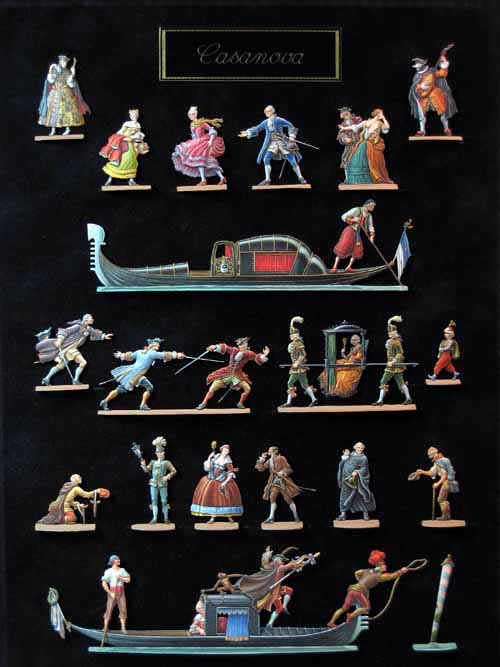 |
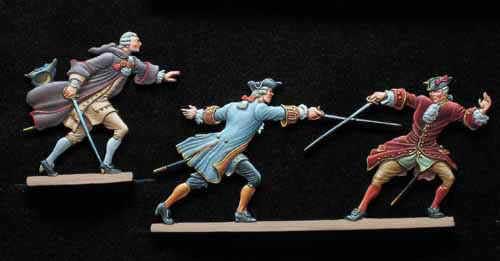 |
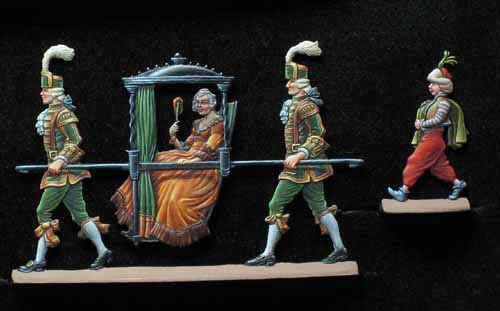 |
|
|
Serie: una notte a Venezia, di K.H.Mohr |
|
Greg Di Franco
| Grande pittore americano di origine italiana, dipinge un po' in tutti i formati, sia con olii sia con acrilici, raggiungendo sempre risultati strabilianti. Accuratissimo nei dettagli e nei giochi di ombre e luci, riesce a creare delle figure vive. Particolarmente sorprendente l'uso degli acrilici, con i quali Greg riesce a dare risultati del tutto equivalenti agli olii, evitando il tipico effetto opaco gessoso degli acrilici | Great american painter of italian origin, paints flat figures in different formats, both with oils and acrylics, always reaching amazing results. Very accurate in details and in handling lights and shadows, Greg succeed in creating living figures. Really astonishing his use of acrylics, by which he obtains results equivalent to oils, avoiding the typical chalky looking of acrylics |
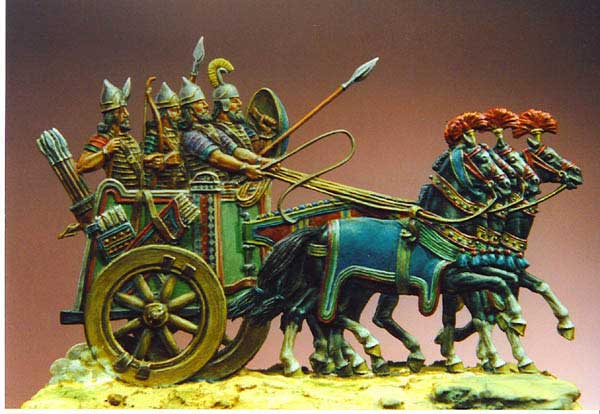 |
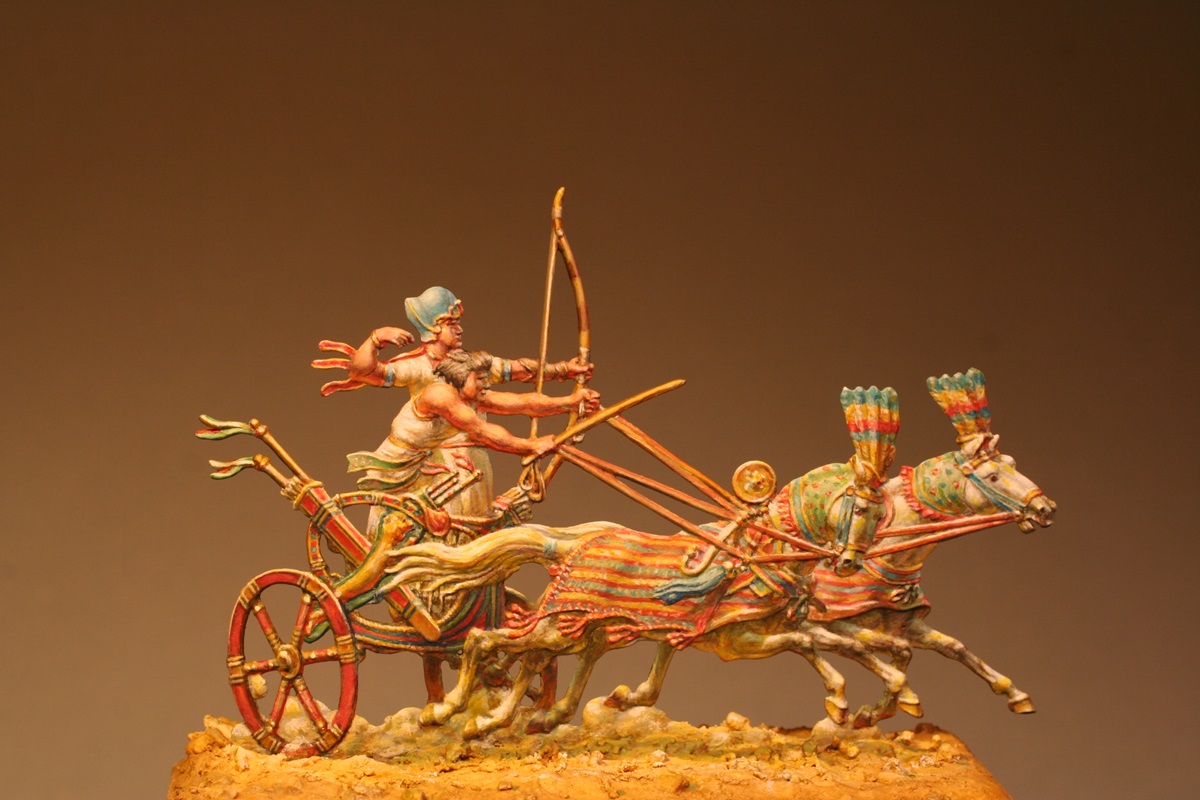 |
| Carro da guerra assiro, 30 mm, dipinto ad olio | Carro da guerra egizio, 30 mm, dipinto ad olio |
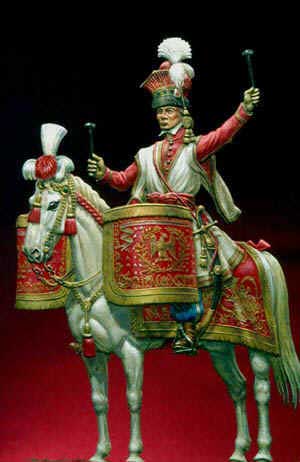 |
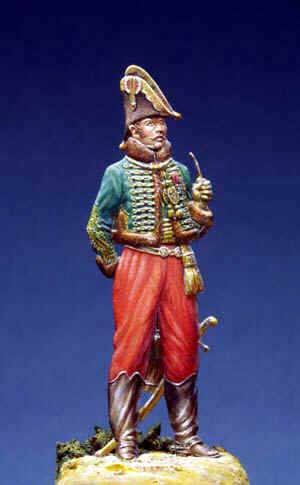 |
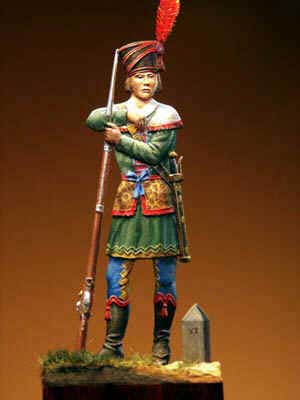 |
| Timballiere dei Lacieri Guardia Imperiale, 90 mm (Quadri Concept), dipinto ad olio | Lasalle, 54mm (Glorious Empires), dipinto ad olio |
Studente della Ecole de Mars, 54 mm, dipinto con acrilici |
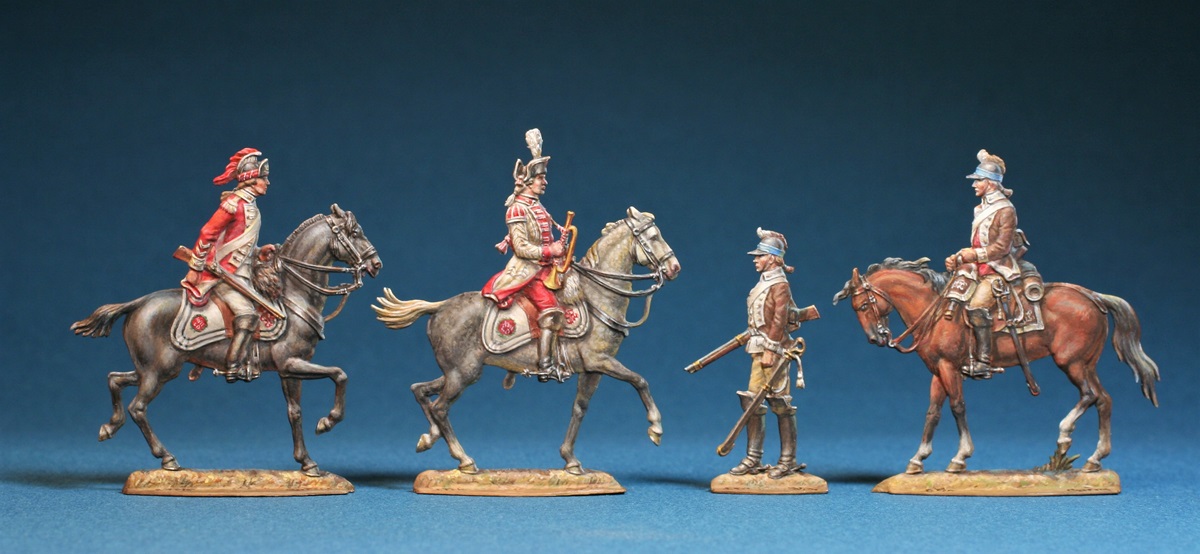 |
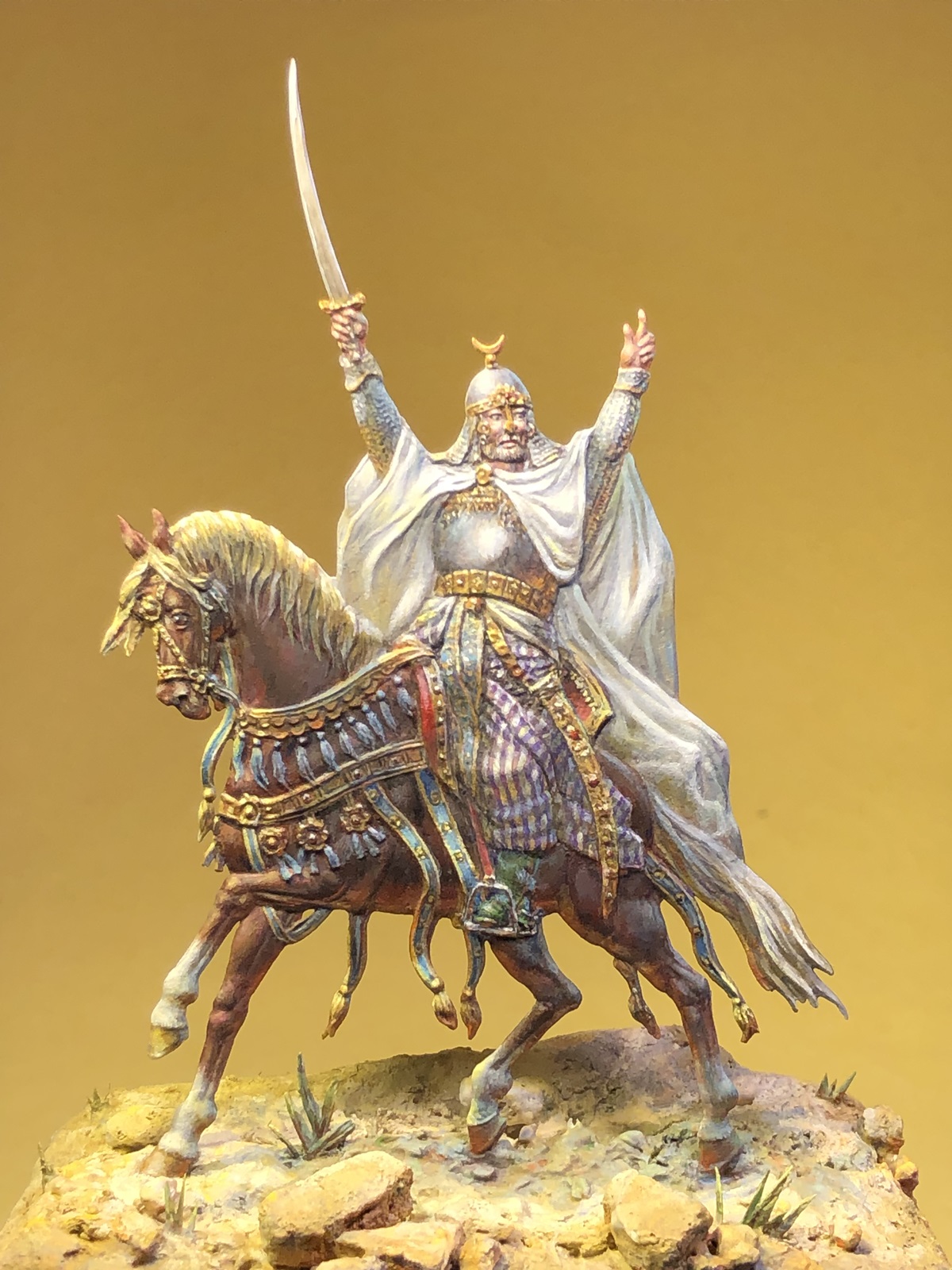 |
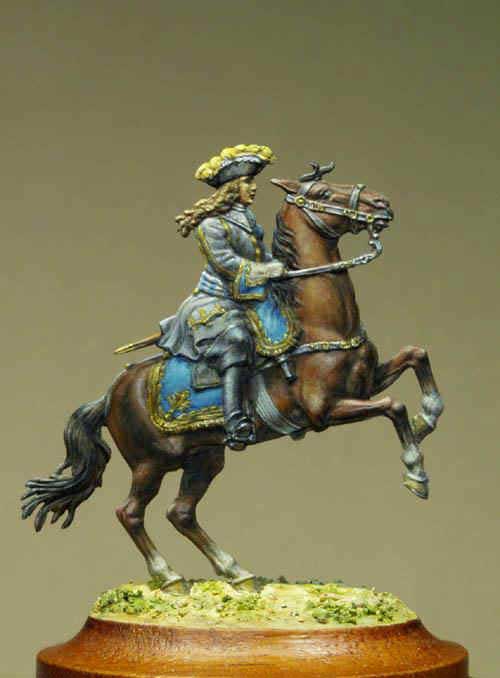 |
| Rivoluzione Americana | Saladino
(medaglia d'oro al concorso Kulmbach 2024) |
Uff. Bavarese dei Dragoni dell'esercito di Massimiliano di Baviera, 30 mm (Neckel), dipinto in acrilici |
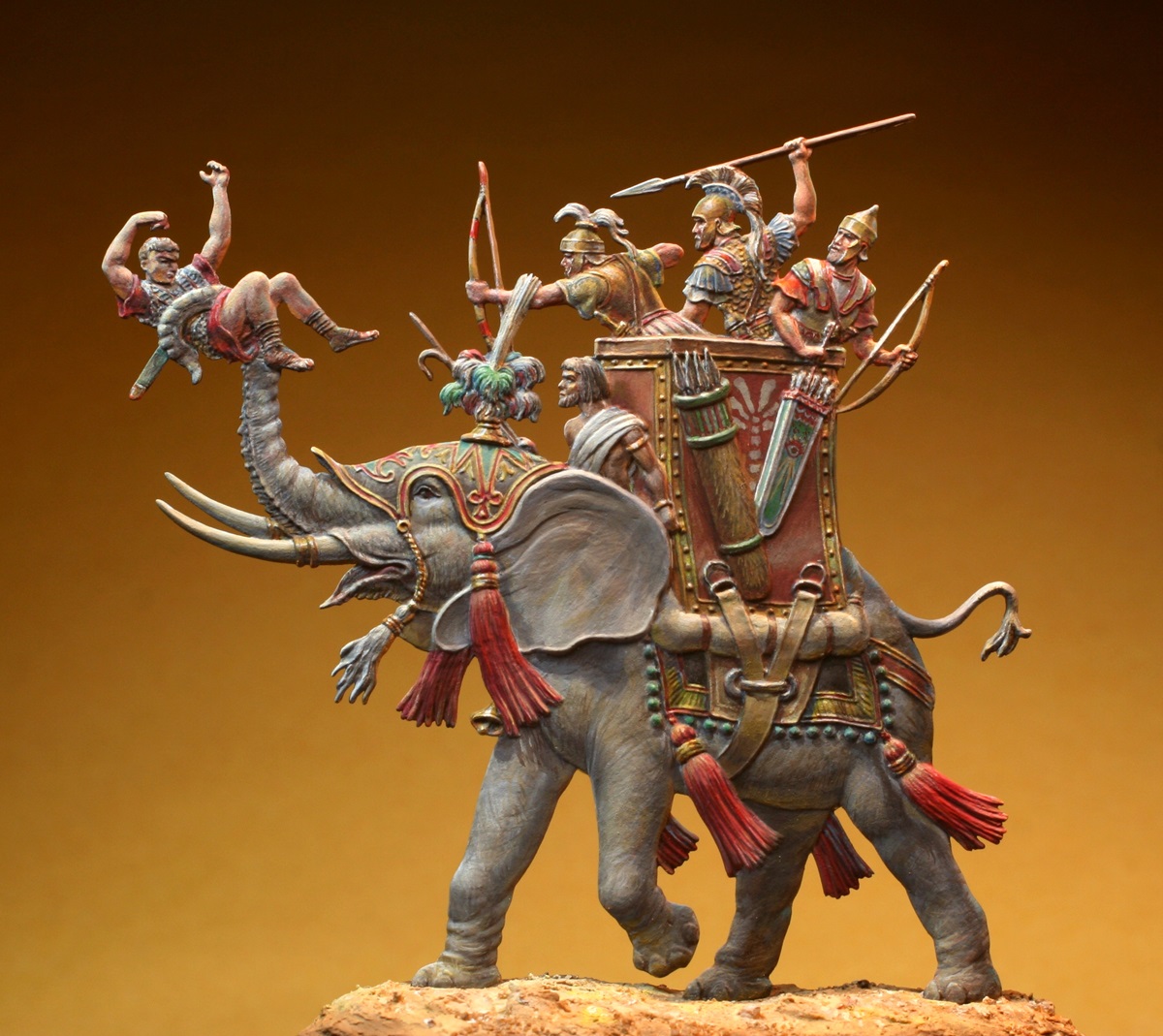 |
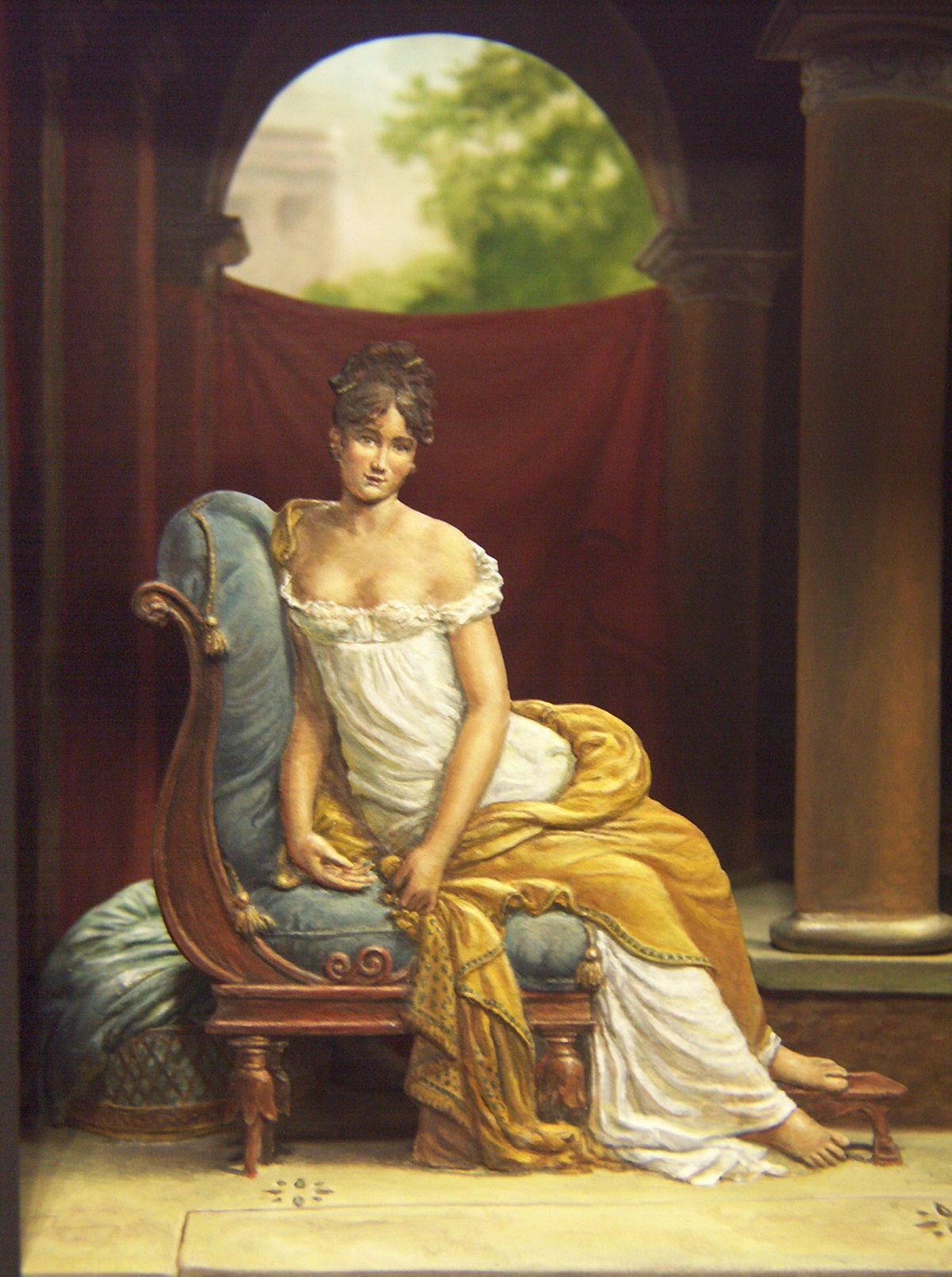 |
M.me Recamier Dal dipinto di Gerard, una figura piatta in 70mm. Qui Greg ha dovuto operare sulla incisione pesanti modifiche: sul viso, sulle spalle, sul braccio destro, sulle gambe posteriori del divano. La pittura straordinaria ha completato un lavoro magnifico. |
|
Elefante da guerra cartaginese (30 mm) |
Walter Fischer
| Famoso pittore tedesco di figure piatte,
scomparso qualche anno fa e che non ebbi la fortuna di conoscere personalmente. Però
avevo visto alcuni suoi pezzi a Kulmbach rimanendone particolarmente ammirato. Forse fu
uno dei primi pittori ad investire il suo talento nei "piatti", dimostrando le
potenzialità di queste figure che fino ad allora erano considerate più o meno giocattoli
per bambini. Sicuramente da considerare un caposcuola. Dipingeva solo su un lato, coprendo le varie parti prima con acrilici e poi facendo le sfumature e finiture ad olio. |
Famous german painter of flat figures, dead some years
ago and which unfortunately I did not know personally. However I had the occasion of
admiring some flats of his own at Kulmbach . Maybe he was one of the first painters
who invested his talent into flats, demonstrating the high potential of these figures,
which, up to that time were considered more or less only toys for children. For sure he was a leader. He used to paint one side only, priming with acrylics and finishing with oils.
|
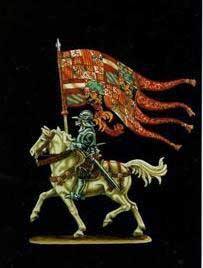 |
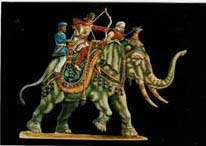 |
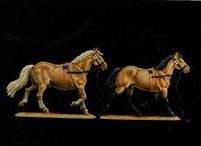 |
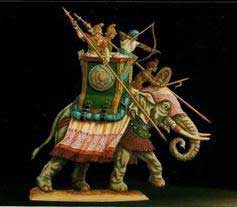 |
|
Alcuni pezzi tipici di W. Fisher |
|||
|
|
|
|
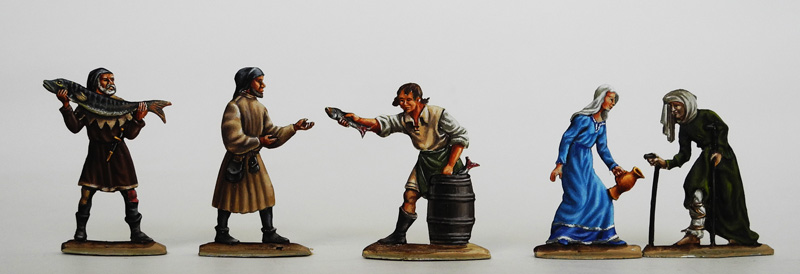 |
| Festa e mercato Medioevale (Fischer 1985) |
STEFAN WACHTER
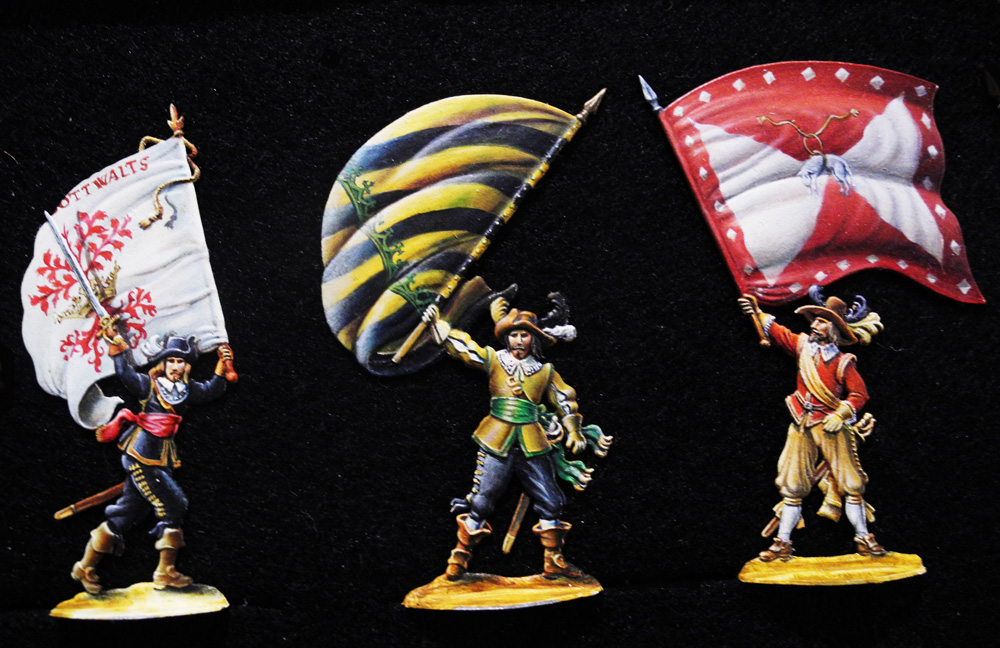 |
 |
|
Bandiere guerra 30 anni |
|
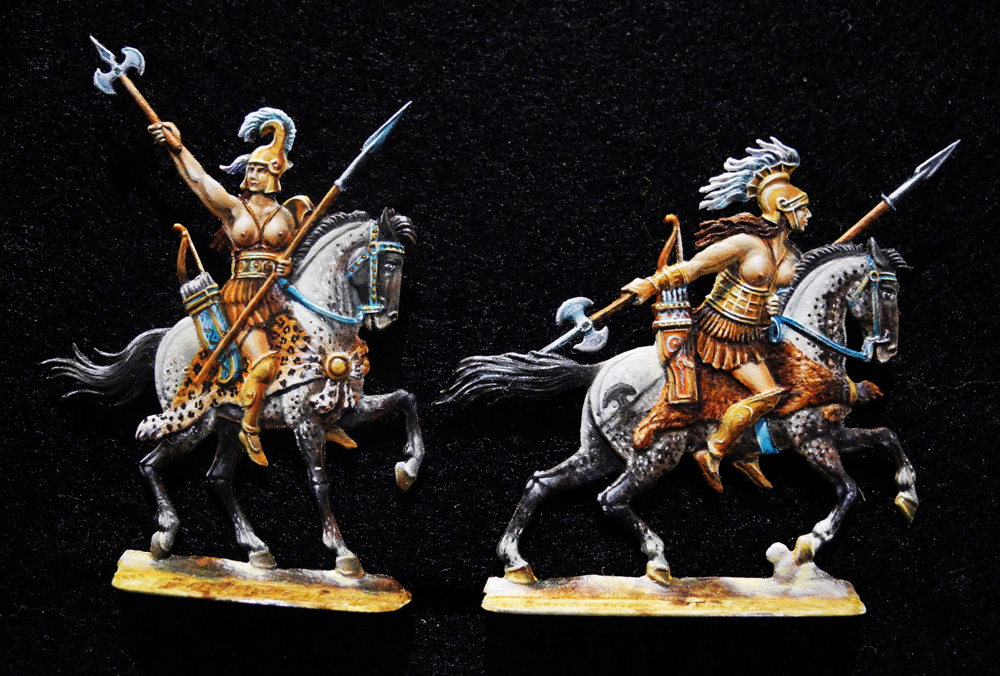 |
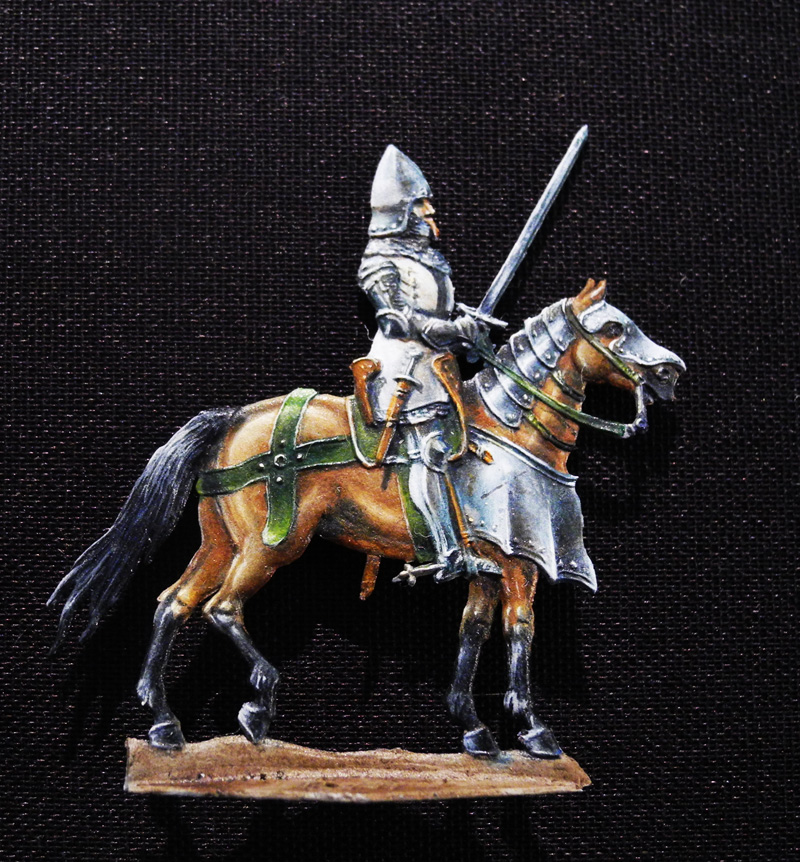 |
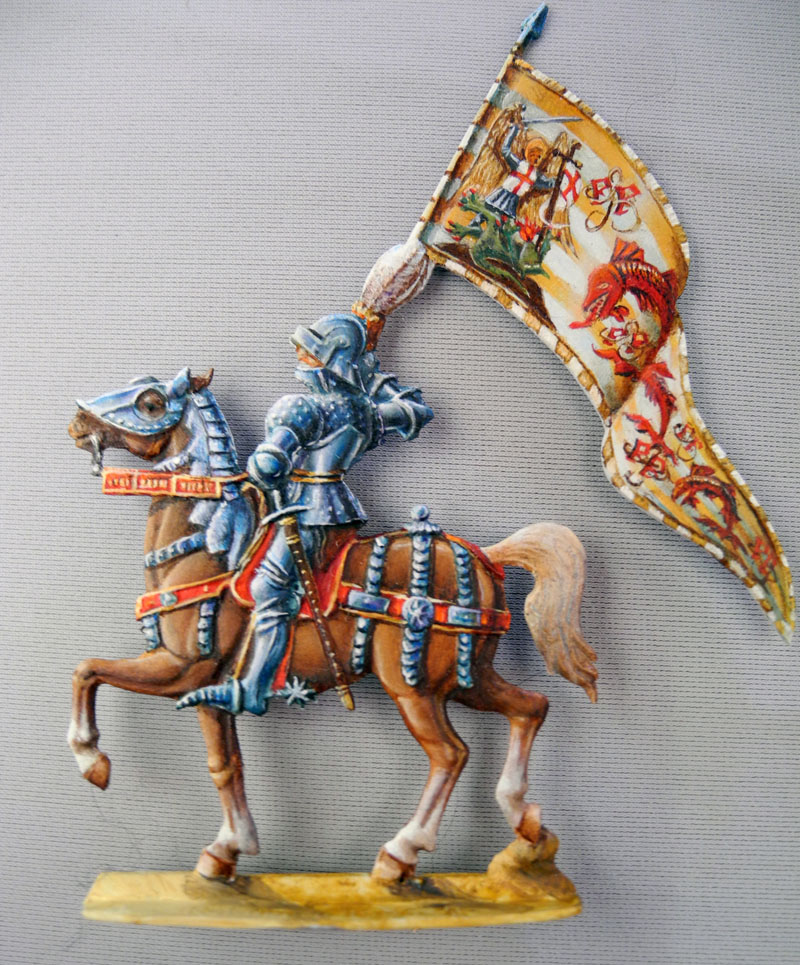 |
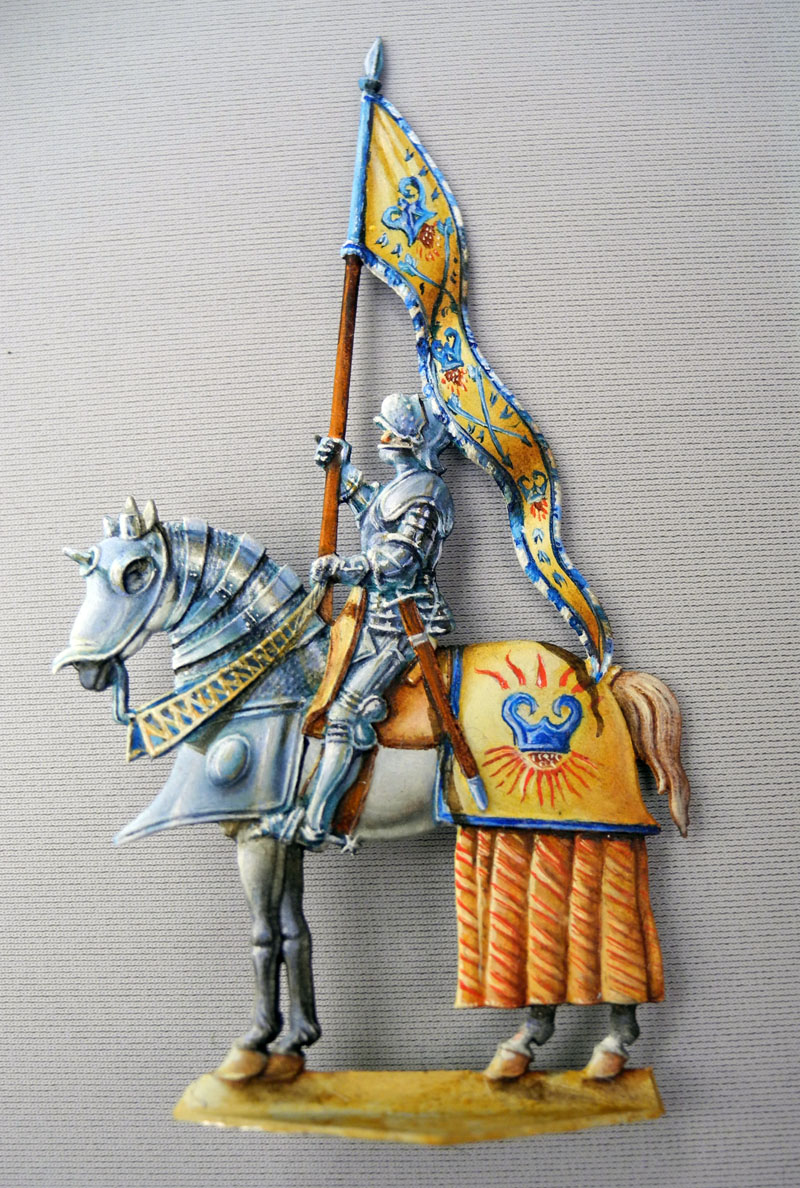 |
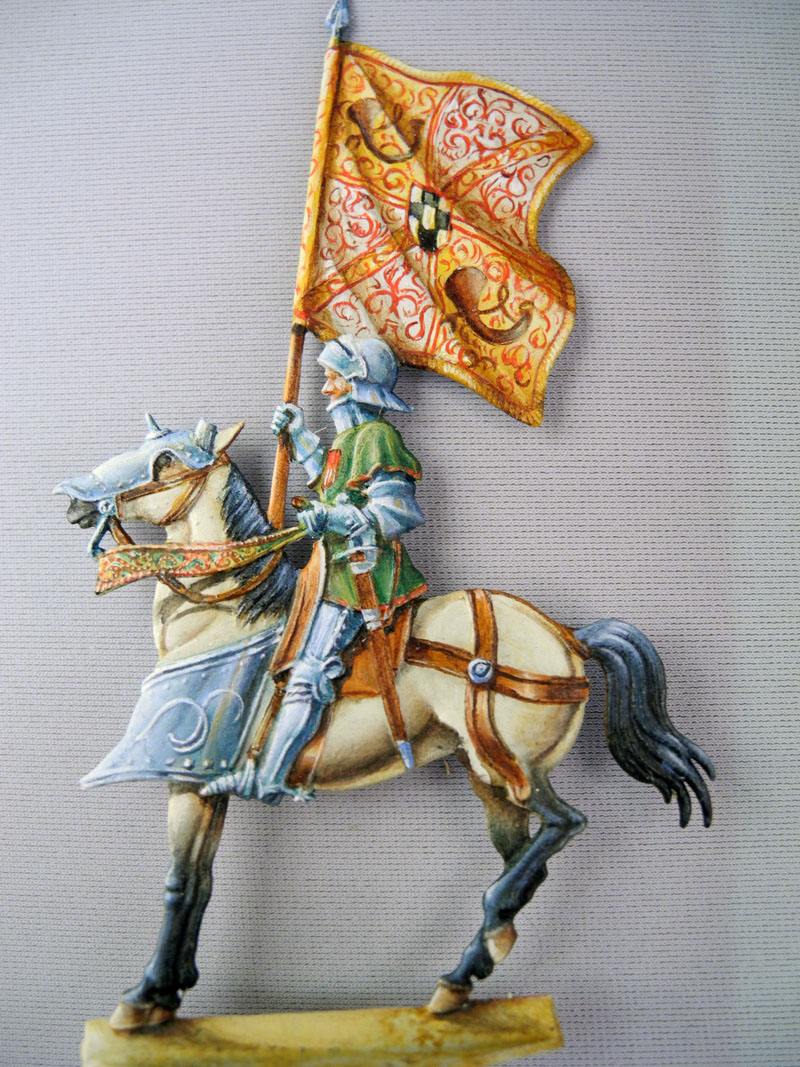 |
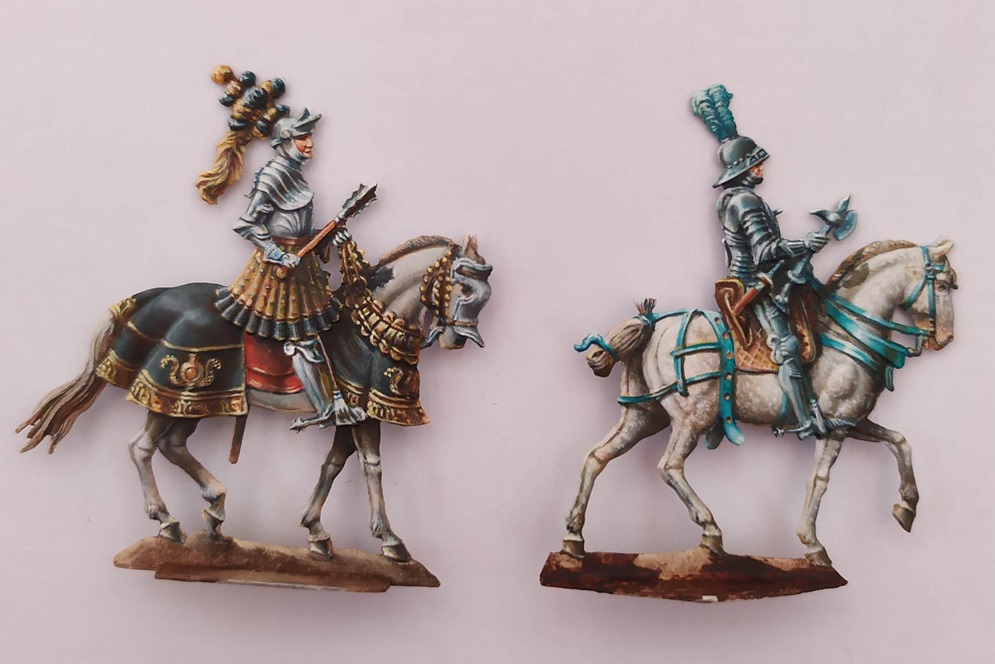 |
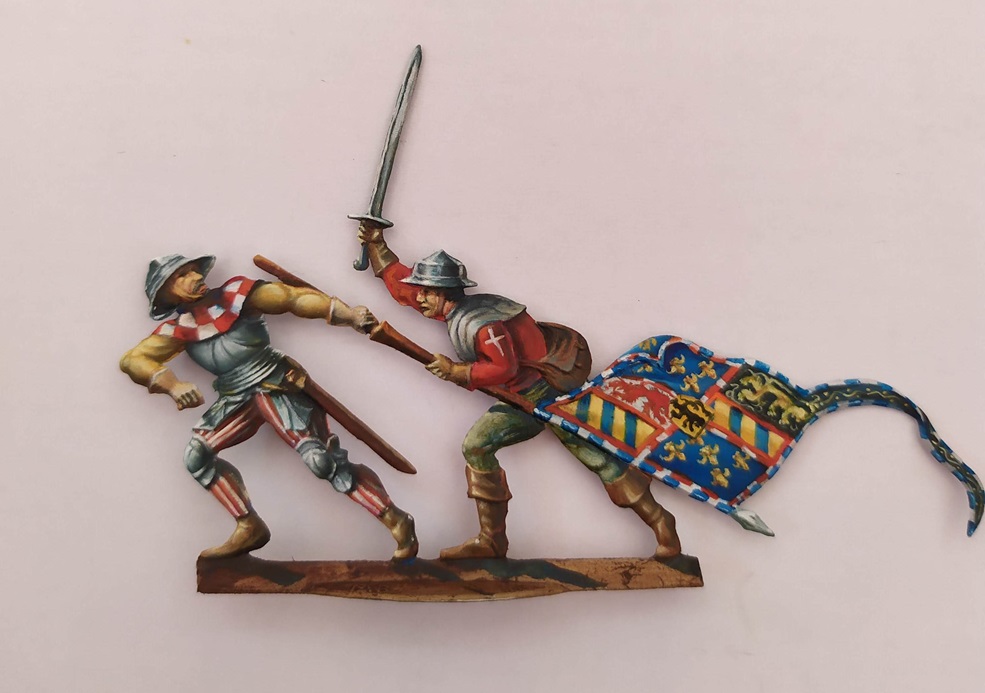 |
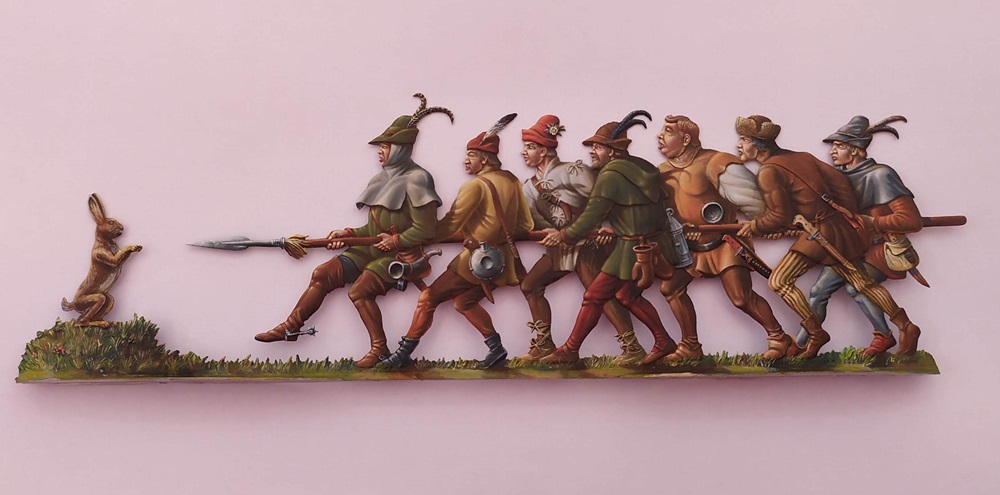 |
CLAUS VETTERLING
| Claus Vetterling Ŕ' un professionista della pittura: infatti il suo mestiere Ŕ restauratore di quadri antichi. E' una fortuna per gli appassionati che anche Claus abbia la passione di dipingere piatti, infatti si possono cosý ammirare le sue creazioni e cercare di imparare le tecniche raffinate, specialmente nella resa dei metalli. | Claus Vetterling is a professional painter: in fact his job is restorer of old paintings. It 'a fortune for fans that Claus has the passion of painting flats, in fact we can admire his creations and try to learn the sophisticated techniques, especially in the painting of metals. |
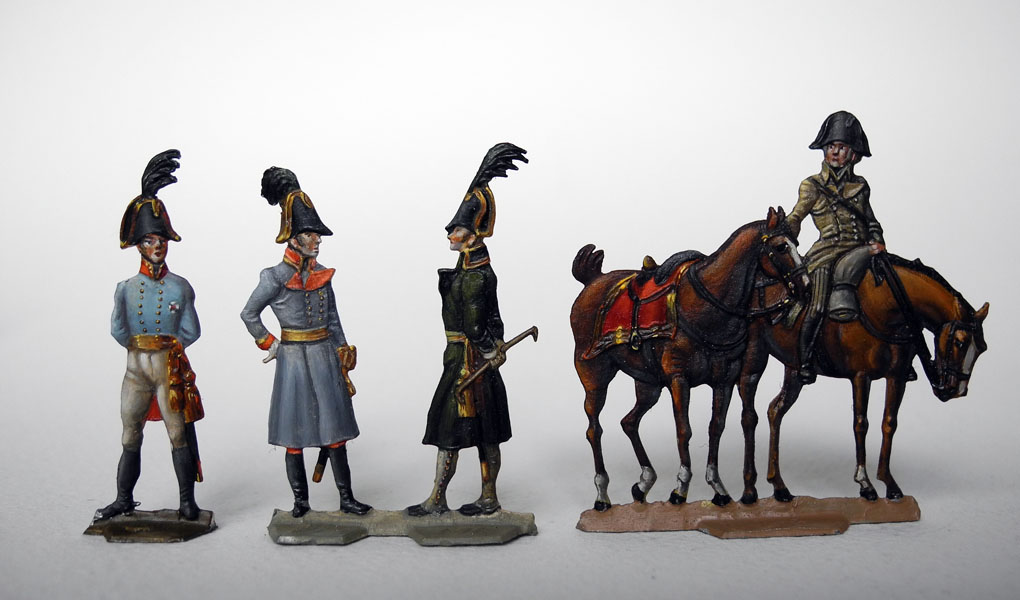 |
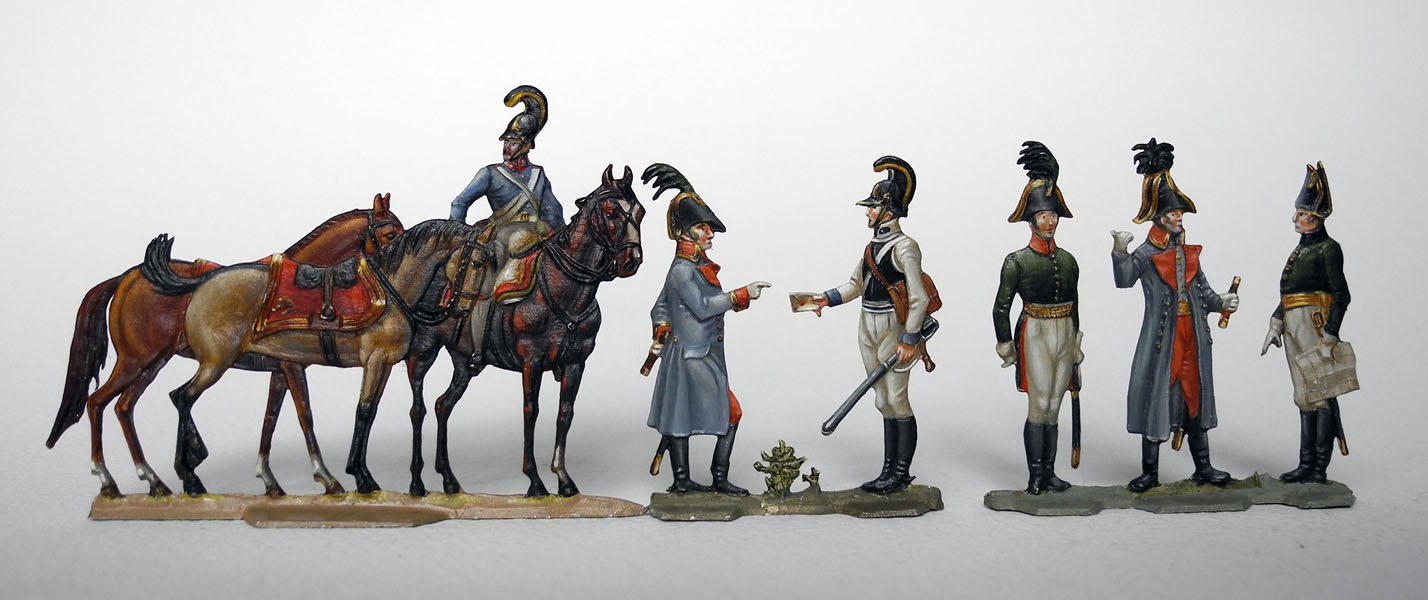 |
|
Staff Austriaca - Figure Frauendorf |
|
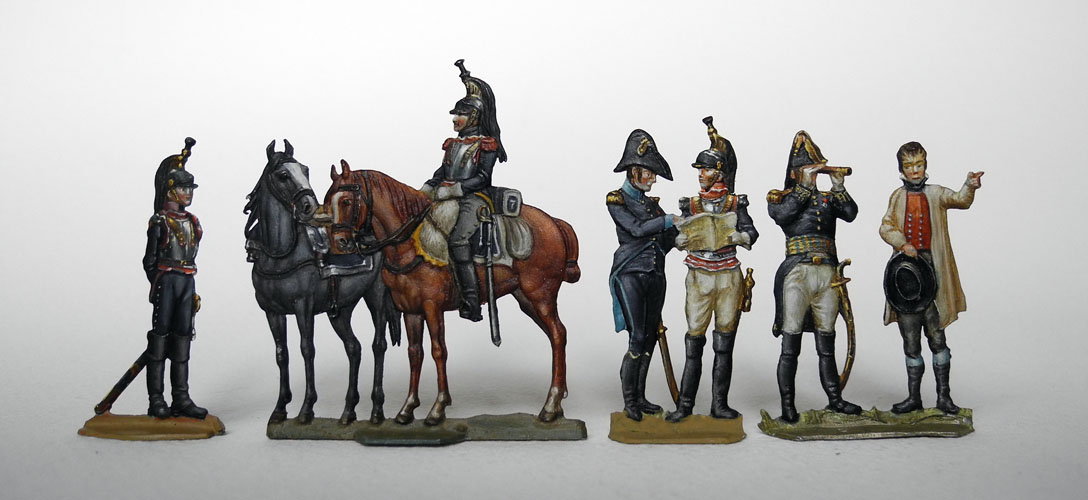 |
| Corazzieri francesi - Figure Frauendorf |
Gianmarco Zannoni
| Gianmarco Zannoni ha iniziato la sua carriera di pittore di
"piatti" molti anni fa ed ha guadagnato diversi premi con il suo stile
ultrapreciso e con grande equilibrio dei toni, delle ombre e luci. Essendo anche un appassionato di giocattoli antichi, ad un certo punto ha prevalso in lui il fascino dei "toys" ed ha cominciato a dipingere i piatti, specialmente Mignot, con colori, tecniche e definizioni iconografiche della Mignot, realizzando uno stile molto personale di toys raffinati. |
Gianmarco
Zannoni
began
his
career as a
painter
of
"flats"
many
years
ago and
won
several
awards
with
its
ultra-precise
style
and with
great
balance
of
tones,
shadows
and highlights.
Being a fan of old toys, at one point he was conquered by the charm of the "toys look" and began to paint the flats, (especially Mignot) with colors, techniques and iconographic suggestions taken from Mignot, creating a very personal style of figures. |
 |
|
Mamelucchi (Editore Thiel ed altri) |
 |
| Francia : treno artiglieria, uniforme da fatica (Editori: Thiel, Mignot) |
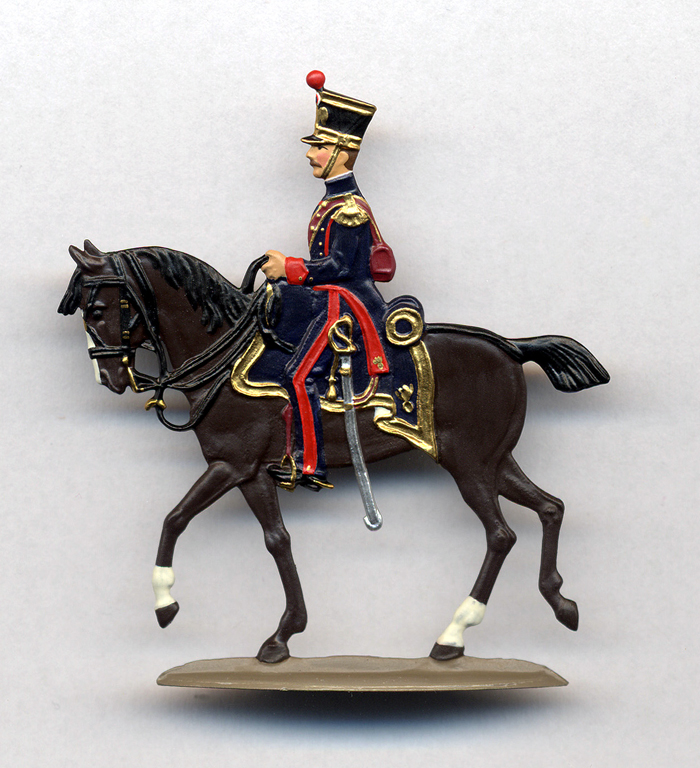 |
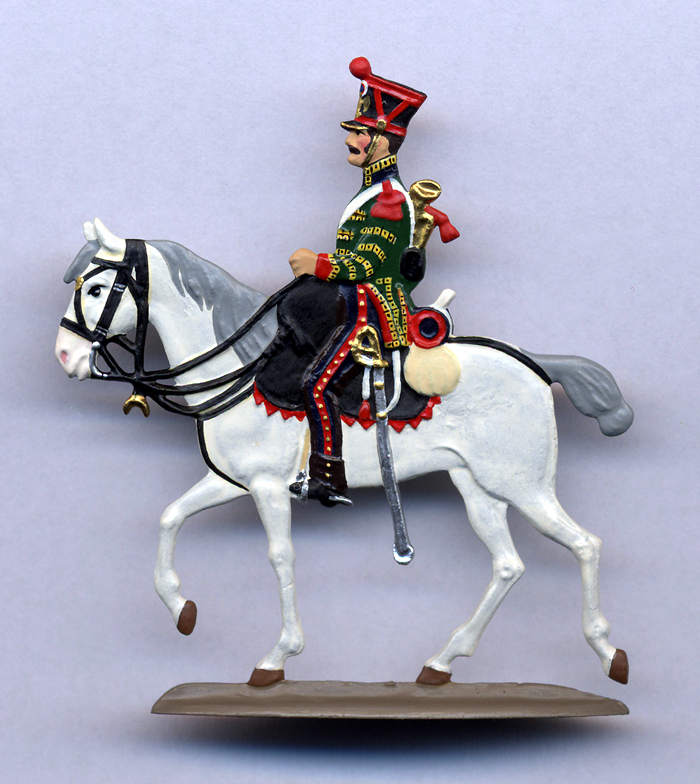 |
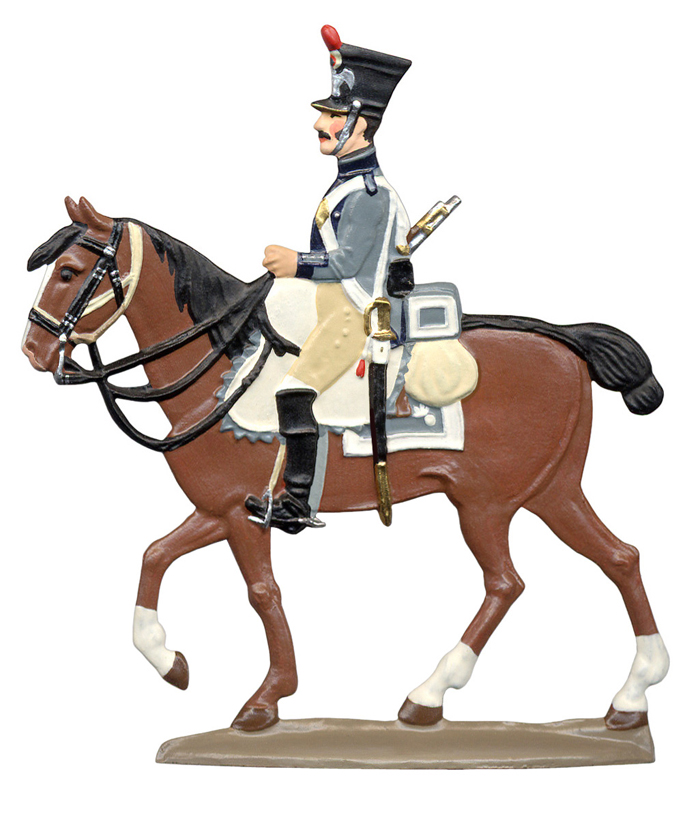 |
| Artiglieria francese, soggetti Mignot. Esempio di pittura "toy", molto precisa e raffinata | ||
Serge Franzoia
| Ho recentemente acquistato
un pezzo di Serge Franzoia ed ho potuto vedere e verificare da vicino la
indiscussa abilitÓ pittorica di questo grande artista, sicuramente uno
tra i grandi interpreti attuali dei figurini piatti
I recently purchased a piece painted by Serge Franzoia and I could see and check closely the undisputed artistic skill of this great artist, surely one of the great interpreters of the current flat figures |
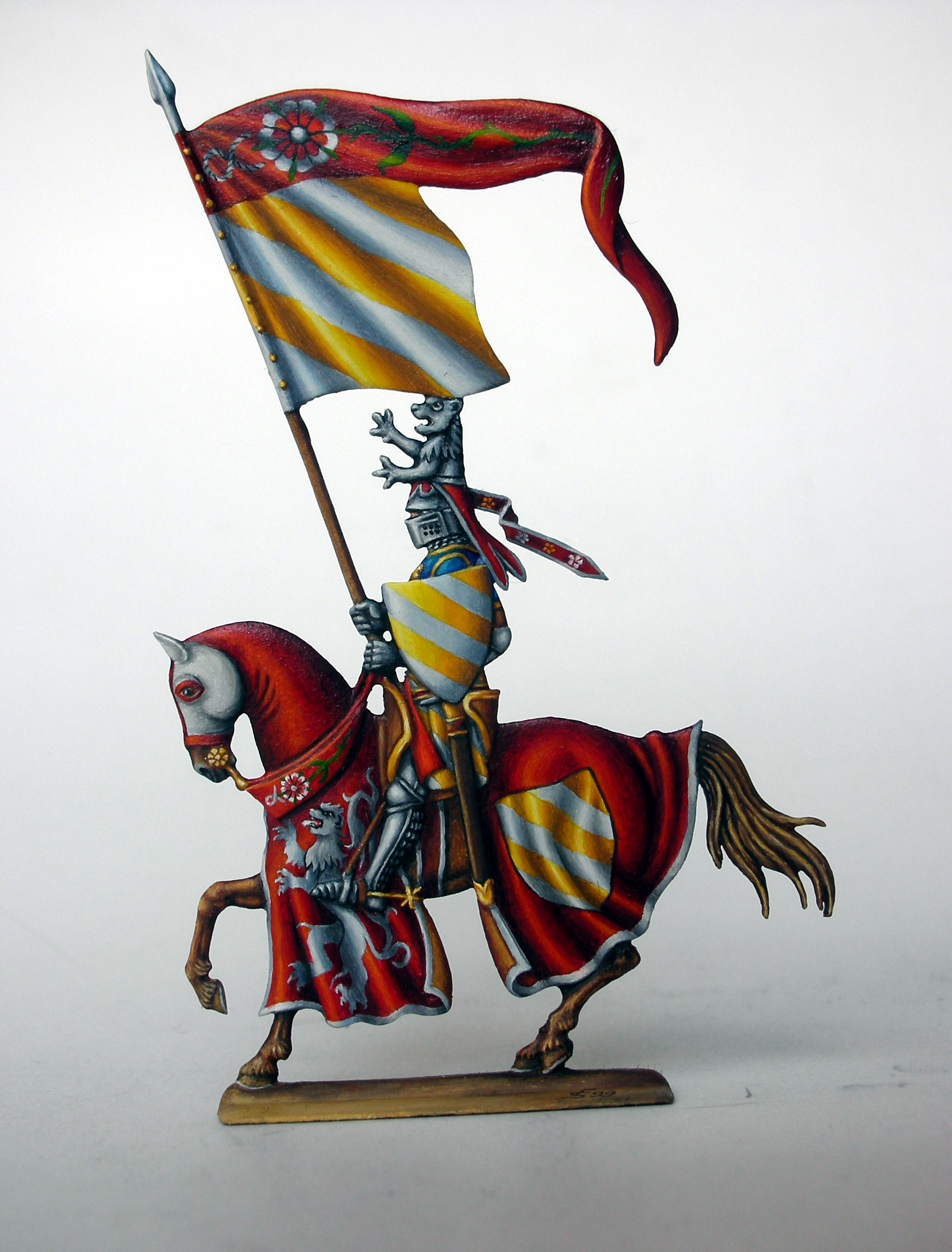 |
|
Agnolo da Lavello (1370-1421) |
A. Boode
| Di questo pittore non so praticamente nulla: ho scoperto le sue figure offerte ad un'asta e me ne sono innamorato a prima vista. Di lui conosco solo figure di antichi. Anche Boode usa colori metallici, ma sfumati con colori scuri in modo da evitare effetti troppo brillanti. Notevole la precisione dei dettagli. | I am sorry I do not know details of this painter: I
discovered his figures offered at one auction and I got in love with his personal way of
painting. I know only figures of ancients by him. Boode uses metallic colours for gold and silver, but blended with dark tones, so that too shining effects are avoided. Great precision in details. |
|
Grecia classica- Serie Ring des Polycrates di RETTER (Dangelmaier) |
|
|
|
particolare |
Gustav Kemnow
| I pezzi qui illustrati sono stati
acquistati recentemente ad un'asta. In occasione della scomparsa di Kemnow (nel 1960), di
lui scriveva così la celebre rivista Die Zinnfigur : "...il collezionista di Berlino ben noto maestro di pennello da pochi raggiunto, da nessuno superato...". Anche se da allora molti ottimi pittori sono comparsi alla ribalta, tuttavia il livello della pittura rimane decisamente alto. |
These figures were recently purchased at an auction. In
occasion of Kemnow's death (1960) the famous magazine Die Zinnfigur wrote about
him: ...the collector from Berlin well known brush master, matched by few, surpassed by no
one..." Even if since then many skilled flat figures painters appeared , the level of painting can be considered surely high |
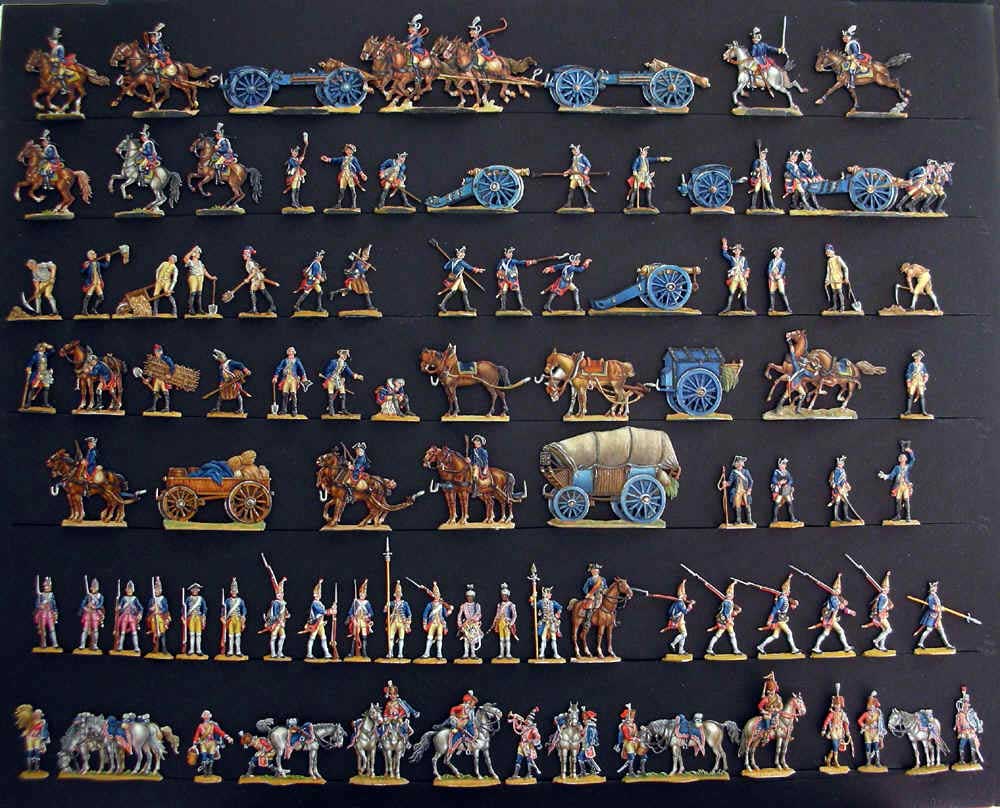 |
|
Esercito Prussiano 1750, varie specialità |
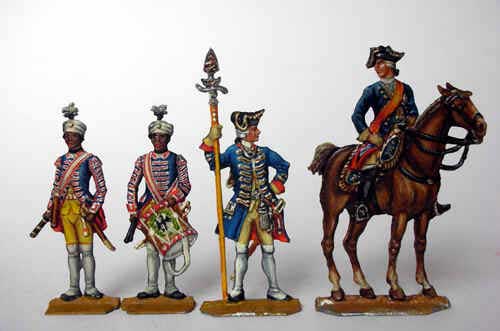 |
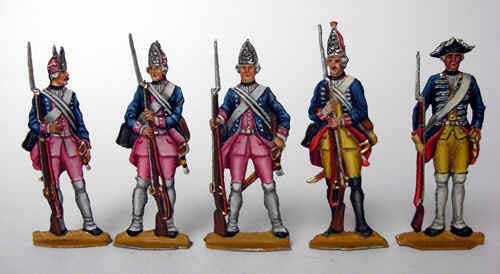 |
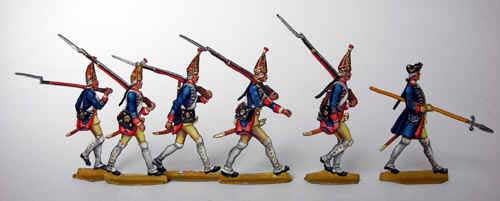 |
 |
 |
 |
Eric Talmant
| Eric Talmant è un pittore francese che ha acquisito uno stile simile per certi versi a V. Douchkine. Dichiara di non essere interessato tanto ai particolari nelle figure da lui dipinte, quanto alla definizione e descrizione dei volumi, attraverso un attento gioco di ombre e luci. Purtroppo, essendo molto preso con il lavoro, ha sempre meno tempo da dedicare alla pittura dei piatti | Eric Talmant is a french painter who acquired a style similar to that of Douchkine's. He says he is less interested to insist on details rather than to describe volumes through an accurate study of lights and shadows. Unfortunately, due to many work engagements, he has less and less time to dedicate to his hobby of painting flats |
Jim Horan
Pittore americano che predilige il periodo rinascimentale è stato, oltre che un caro amico, il mio maestro adottivo per la pittura dei piatti quando all'inizio, provenendo dal tutto tondo, ero rimasto sbalordito dall'impatto e dal fascino che una figura piatta ben dipinta può suscitare.
American
painter who prefers the Renaissance. He was a dear friend of mine and a paragon for
me at the beginning when, coming from the ronde boss world, I remained astonished by the
fascination of well painted flat figures. Sadly Jim left us in 2023 |
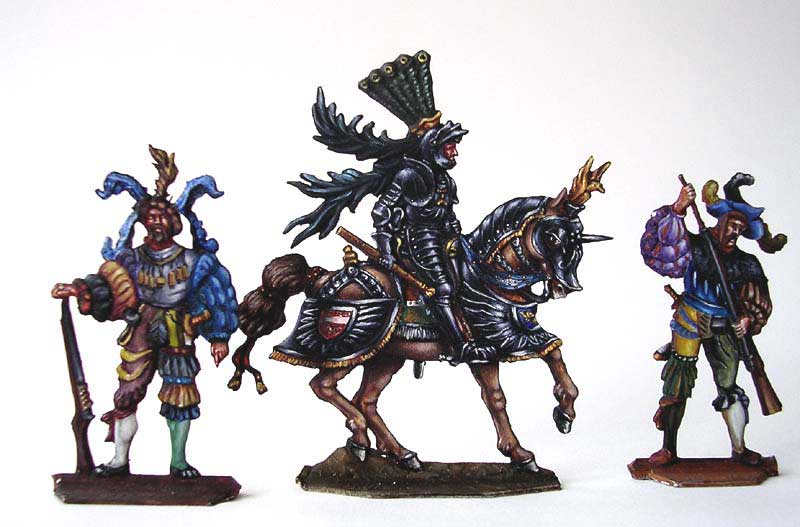 |
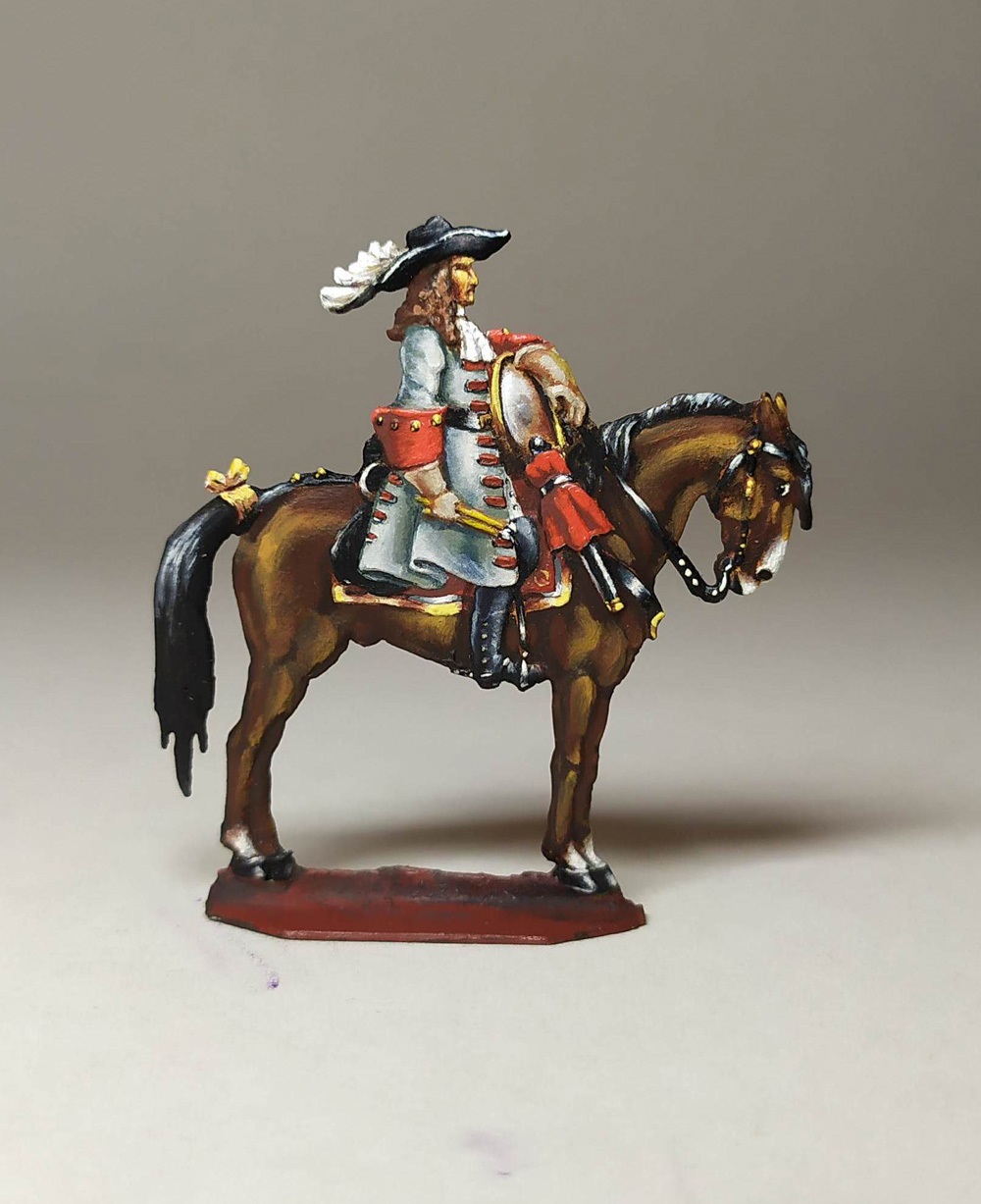 |
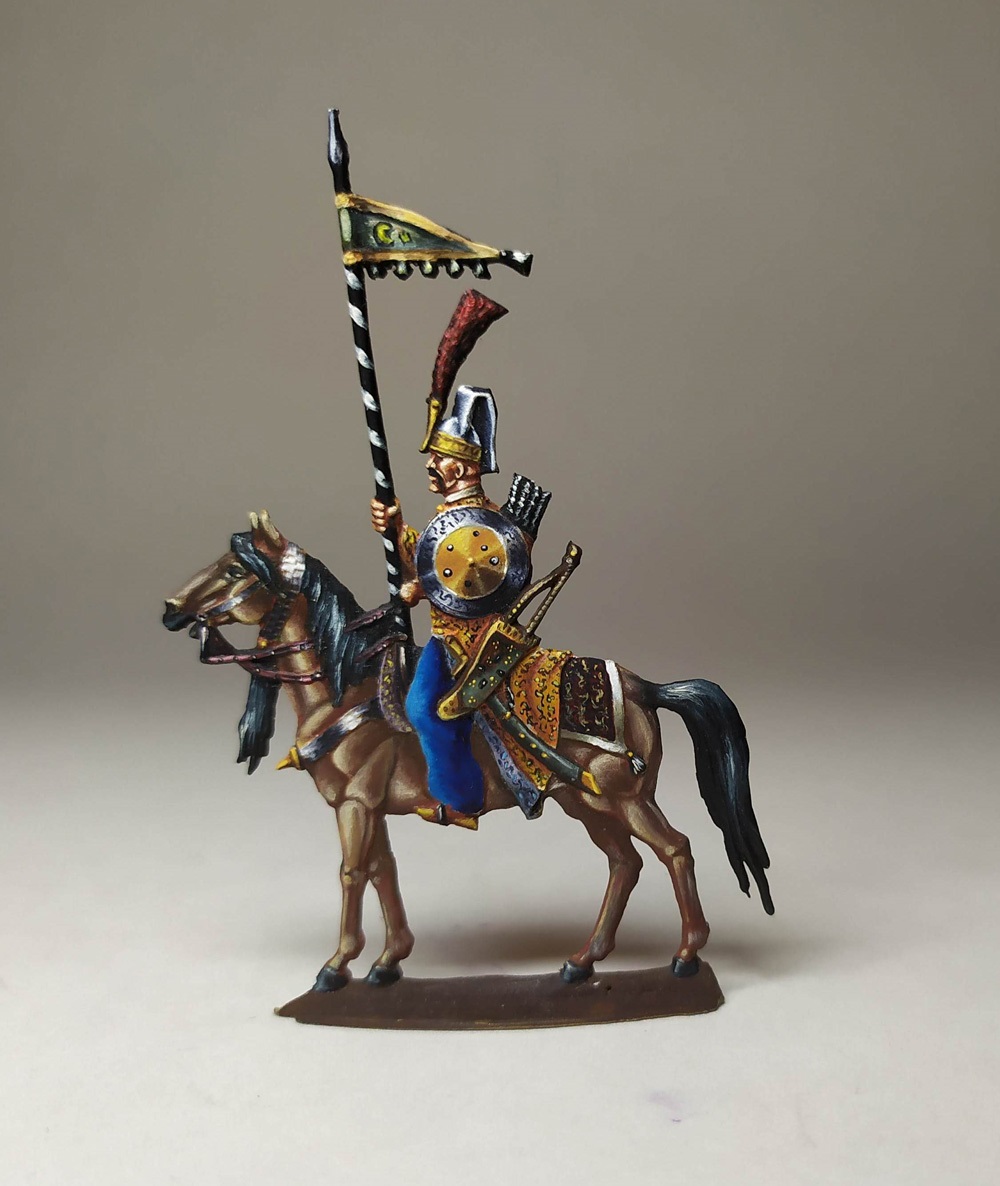 |
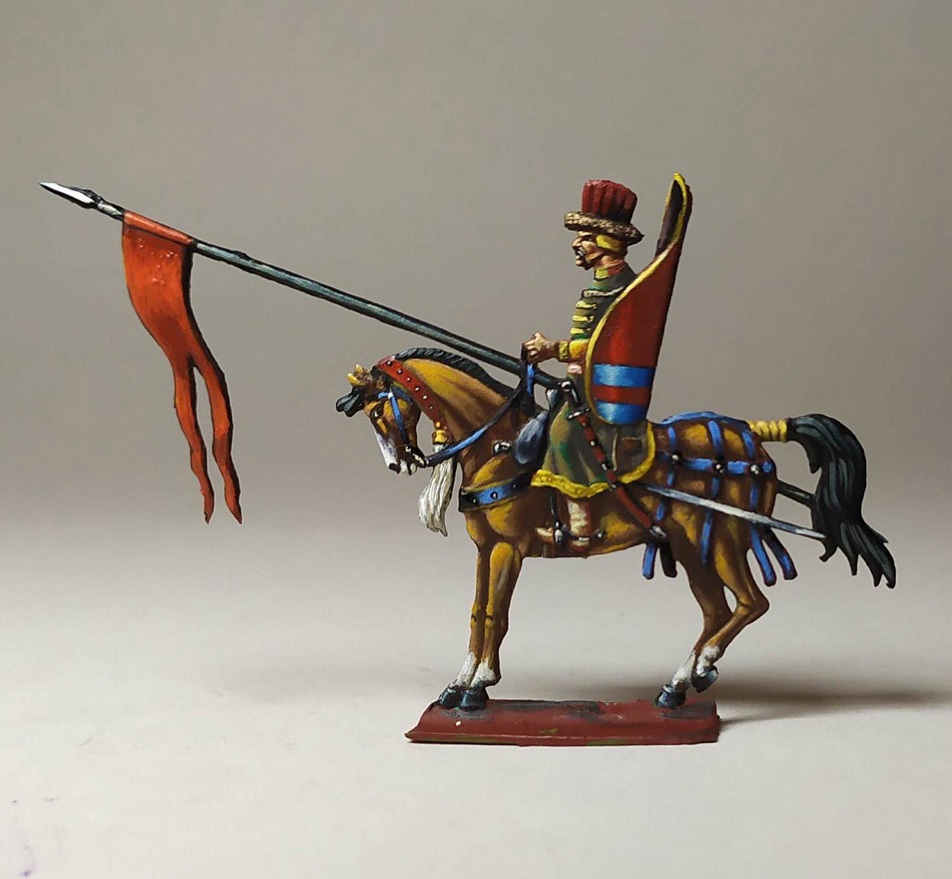 |
|
|
|
Fabrizio Cheli
|
Fabrizio si presenta da sŔ: La mia pittura si basa su una tecnica mista acrilico /olio. Utilizzo le tempere acriliche per i fondi e un abbozzo di luci ed ombre e rifinisco con i colori ad olio per avere dei passaggi di colore pi¨ morbidi e pieni. Ho cominciato con dei soggetti medievali che in fondo sono anche i miei preferiti. Mi piace studiare la luce sulle armature di metallo e rendere la tridimensionalitÓ delle coperte dei cavalli e lo studio dell'araldica. Preferisco i soggetti a cavallo, benchŔ pi¨ complessi da dipingere, per il loro fascino e perchÚ amo dipingere i cavalli.
|
Self presentation of Fabrizio:
My
appoach to the world of flat figures was a long one.
|
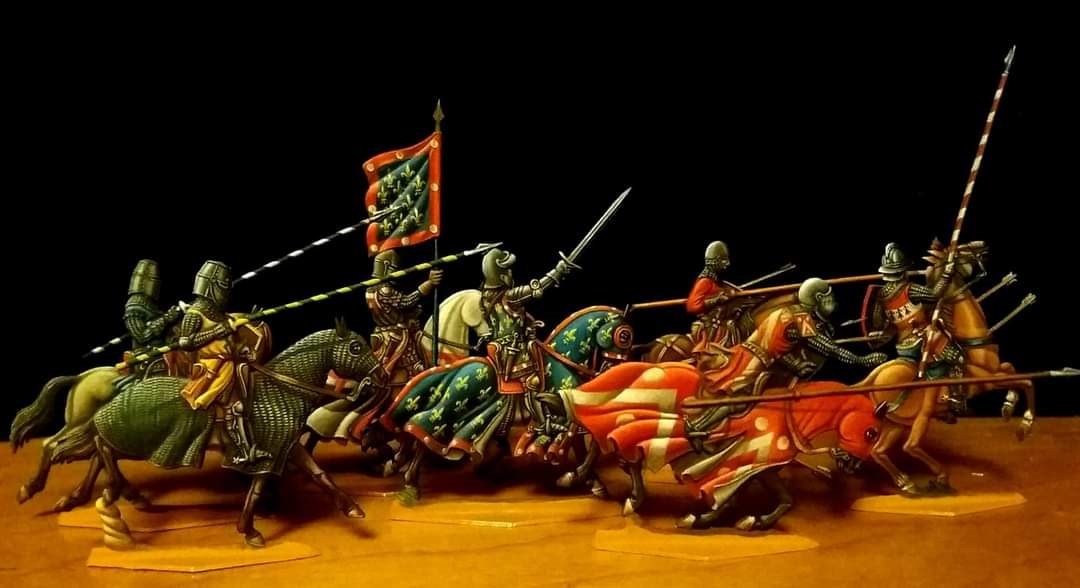 |
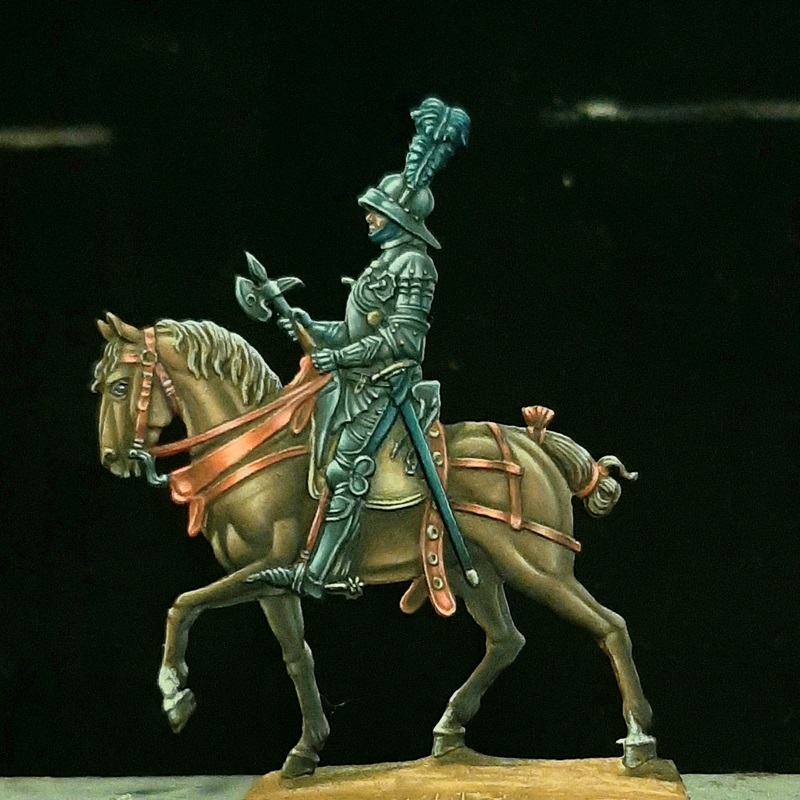 |
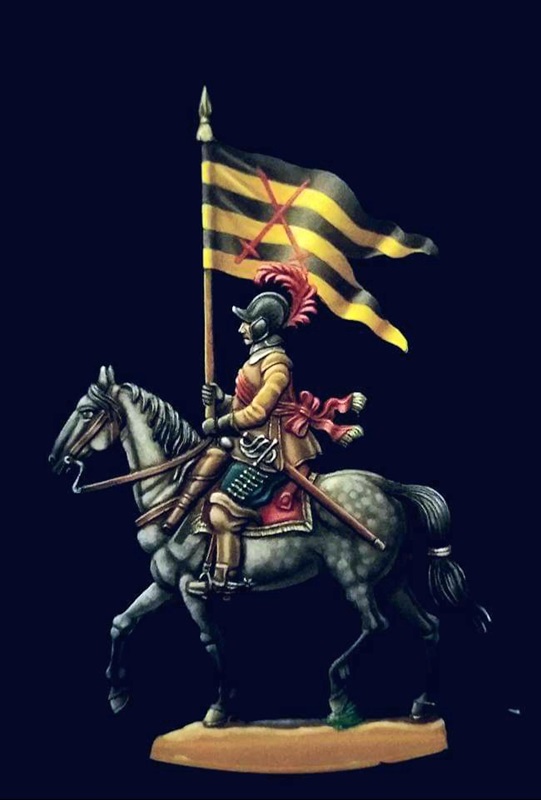 |
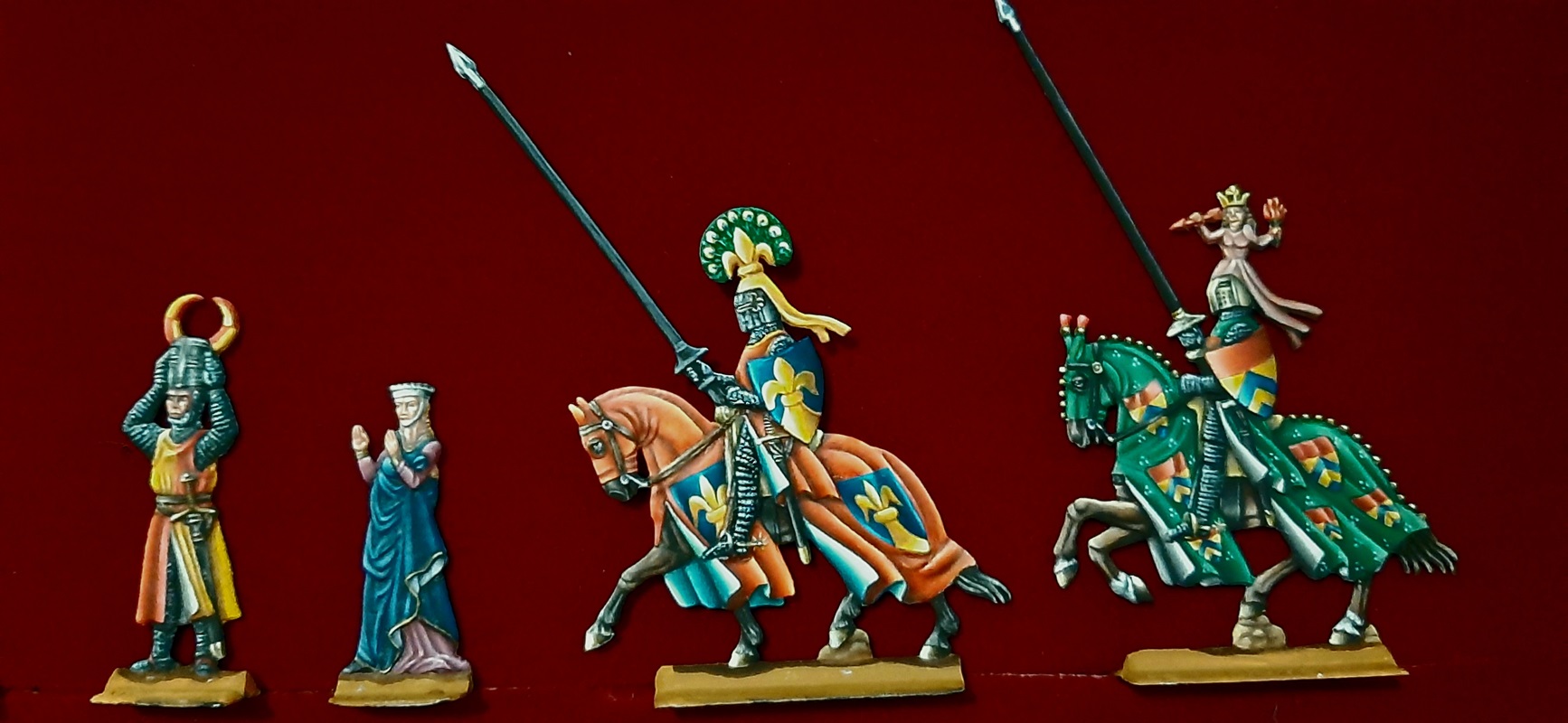 |
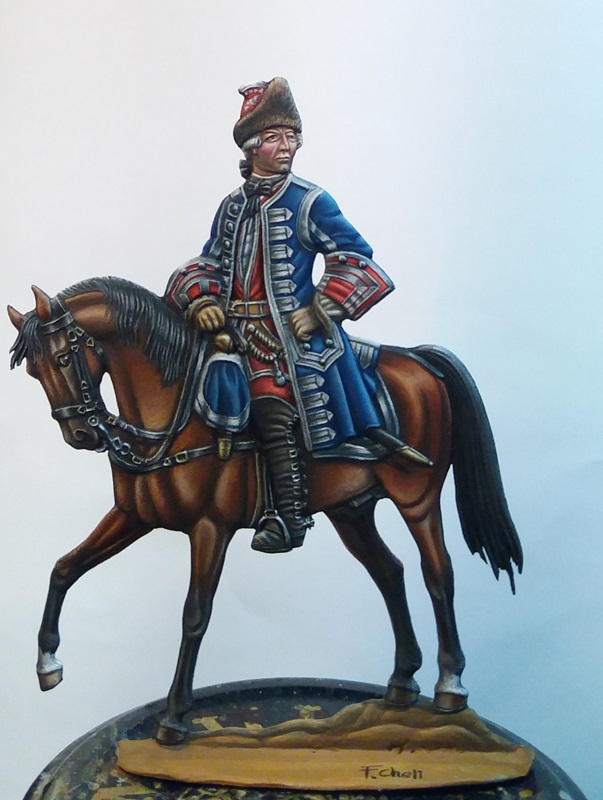 |
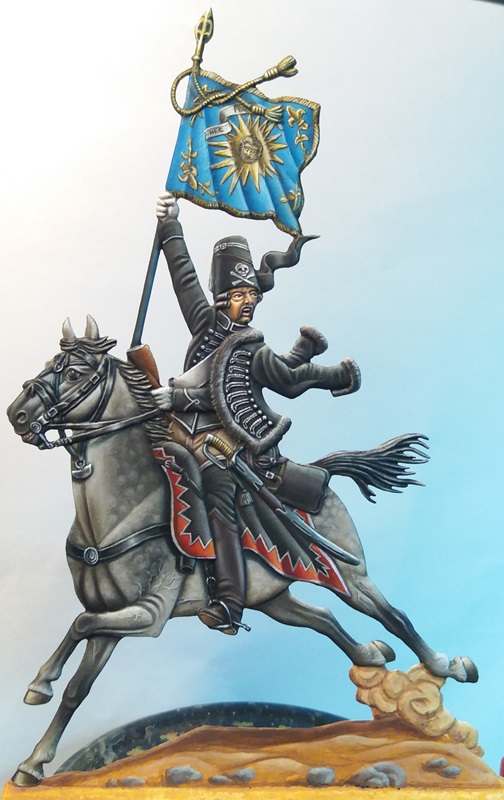 |
 |
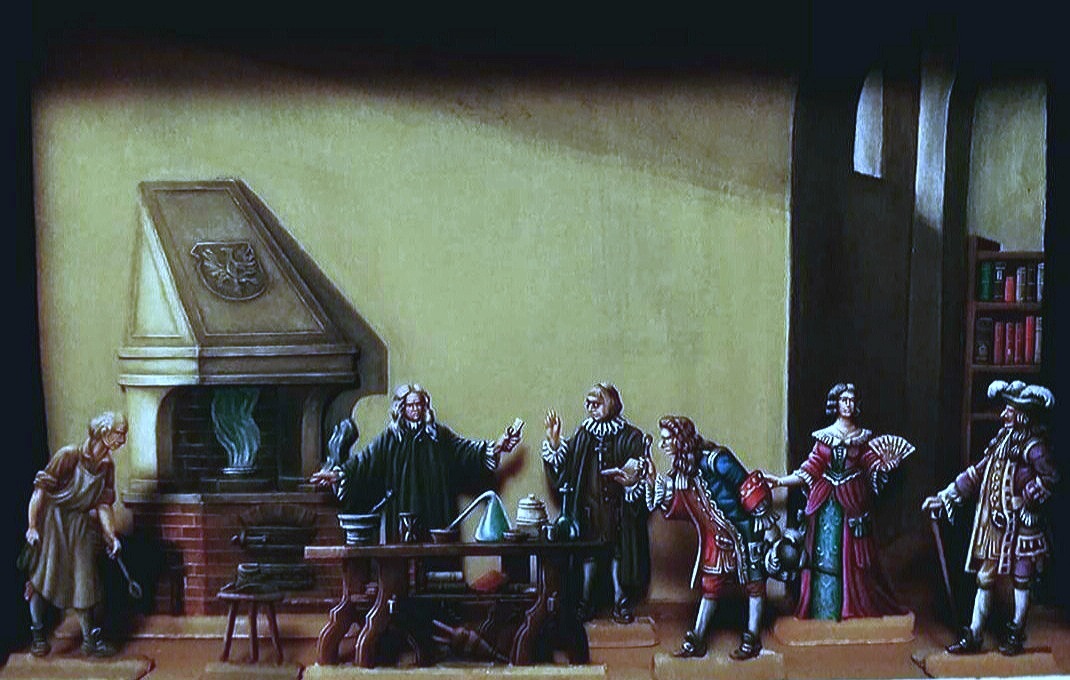 |
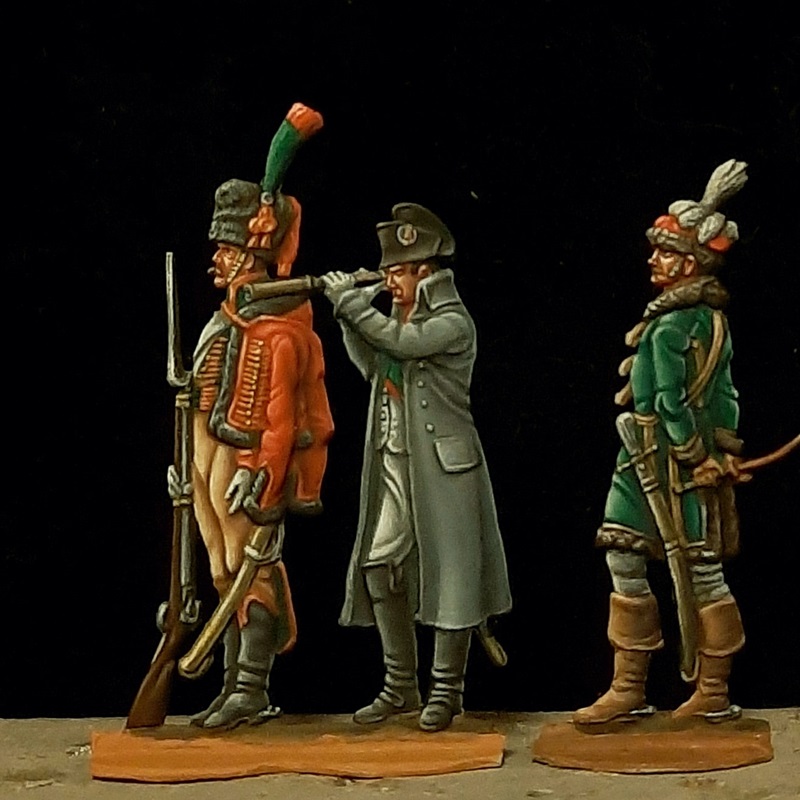 |
Kjeld Buchholtz
| E' un grafico ed abita poco fuori Copenhagen. Dipinge esclusivamente con colori ad olio, ispirandosi ai pittori francesi del 1700 e 1800, ai pittori Olandesi e agli illustratori classici di metà '900, con occhio attento anche ai lavori degli altri pittori di piatti. |
Graphic Designer lives just outside Copenhagen. He paints solely in oil colours, and his inspiration are French painters 1700-1800, Dutch painters, the old Classic illustrators 1920-55, with duly attention to other flat painters' work.
|
|
|
|
| Re Cristiano IV di Danimarca, prodotto in
edizione limitata da Kjeld Lülloff in Danimarca. Figura grande da vetrina. Particolare
della figura, che mette in risalto la notevole abilità del pittore
Danish King Christian the 4th, a limited edition figure edited by Kjeld Lülloff, Denmark. Vitrienenfigure. Detail of the figure, which highlights the great skill of the painter |
Maschera della Commedia dell'arte, produttore Historia
Müller, scala grande
Comedia dell'arte: Editor Historia Müller, Vitrinenfigure |
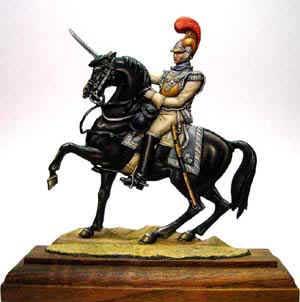 |
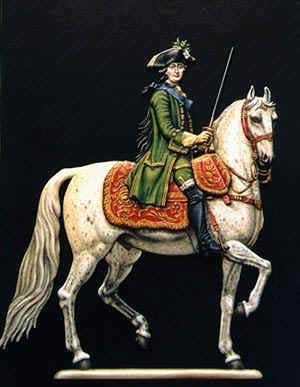 |
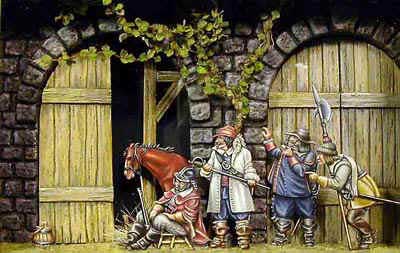 |
| Carabiniere Francese, produttore FM, scala
grande
French Carabinier: Editor FM, Vitrinenfigure |
Caterina la Grande, incisione e produzione
Vladimir Nuzhdin di St Petersburg, scala grande
Katarina the Great, engraved and edited by Vladimir Nuzhdin, of St Petersburg. Vitrinenfigure |
Scena della guerra dei 30 anni o guerra civile inglese.
Diorama autocostruito, figure 30 mm prodotte da Wolfgang Bock (Germania)
30 years war/english civil war figures, homemade background, figures engraved and edited by Wolfgang Bock, Wernigerode, Germany. 30 mm figures. |
Valerio De Iorio
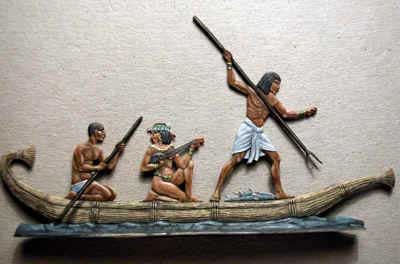 |
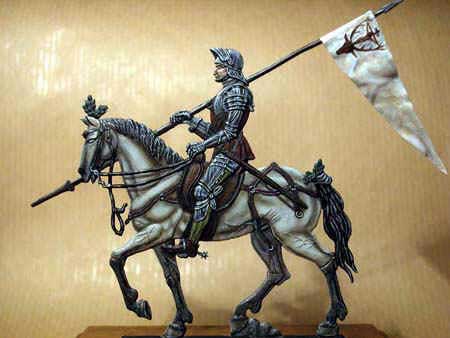 |
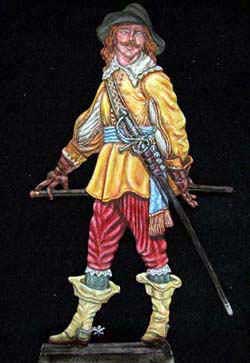 |
|
Barca egizia (Hafer), 30 mm |
Cavaliere gotico , 54 mm |
Moschettiere, 80 mm |
|
|
Questo pittore italiano dipinge sia figure a
tutto-tondo che piatte, di diverse dimensioni. Nel caso dei piatti, i figurini sono
dipinti direttamente con colori ad olio, senza fondo in acrilico, cosa che
generalmente usa con i tutto-tondo. Cerca l'ispirazione per la tecnica pittorica
attraverso un attento studio dei dipinti fiamminghi ( per es: per il
moschettiere ha esaminato quadri di Van Dyck e di Frans Hals), nonchè
attraverso l'esempio di figurini piatti dipinti da altri pittori. Recentemente ha provato con successo l'arte dell'incisione, per esempio con il suo lanzichenecco 80 mm (qui illustrato) con il quale ha vinto la medaglia di bronzo a Girona. |
This italian painter works both in the
ronde boss and flat figures, in different scale. As for flats are concerned, he paints the
figures directly in oils, without acrylic primer (he uses acrylic primer in ronde boss
figures). He carefully studies the tecnics expecially of Flemish painters (e.g.: for
the Musketeer he examined paintings of Van Dick and Frans Hals); he also looks with
attention to the work of various flats painters . Recently he tried with success the art of engraving, i.e: with his 80 mm Landsknecht (here shown), by which he won the bronze medal at Girona. |
|
|
|
Louis Liljedahl
| Si presenta da sŔ cosý: "Mi chiamo Louis Liljedahl e sono un appassionato di piatti, preferibilmente nella scala 30 mm. In generale preferisco il periodo antico, ma se una figura Ŕ ben fatta come disegno e incisione, mi pu˛ piacere, indipendentemente dal periodo storico. Uso colori ad olio e presto pi¨ attenzione all'impatto visivo, cioŔ al contrasto dei colori, piuttosto che ai minimi dettagli: lo scopo Ŕ quello di dare realismo alla figura. Anche se i vestiti sono sempre impegnativi da realizzare, la sfida Ŕ sui metalli. Tuttavia il mio soggetto preferito per la pittura sono i cavalli che io considero la creatura anatomicamente pi¨ perfetta sulla Terra. I miei scultori preferiti sono i vecchi maestri Frank, Mohr, Maier e Thieme, ma ci sono anche alcuni nuovi che sono molto abili.
|
He introduces himself:
|
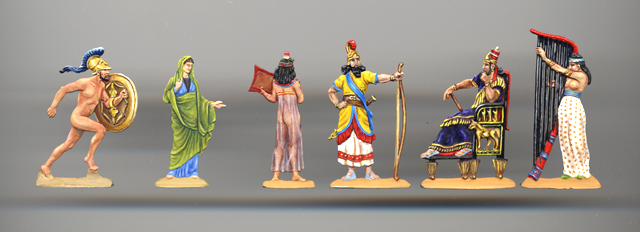 |
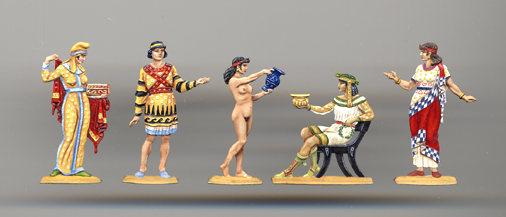 |
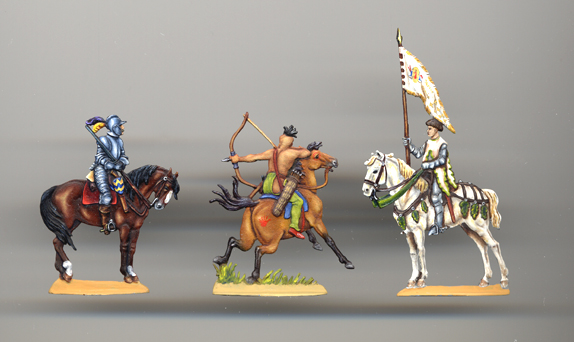 |
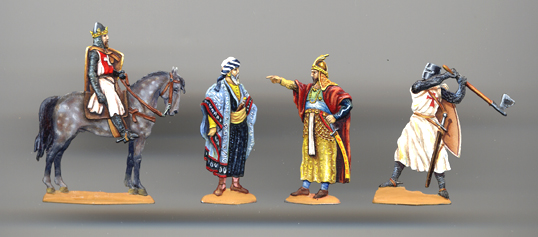 |
Vassilij Safonov
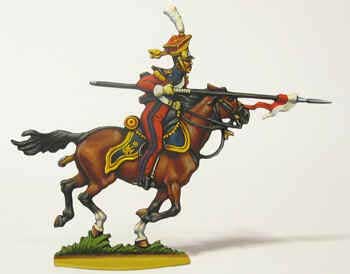 |
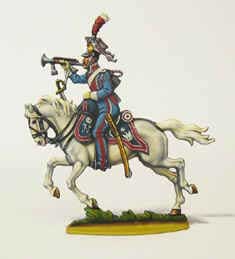 |
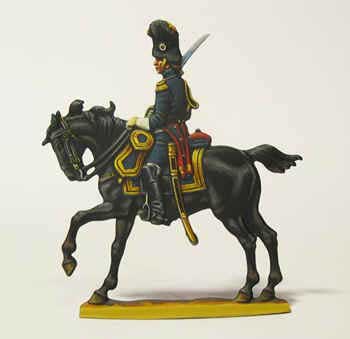 |
| Cavalleria napoleonica (dalla
collezione Andrew Breitfuss) Napoleonic cavalry (from Andrew Breitfuss' collection) |
||
Vassilij Safonov è un pittore russo di circa 30 anni, vive
a S. Pietroburgo: Lavora nel museo Suvorov ed è un re-enactor nei reparti Napoleonici di
fanteria leggera francese.
Ha cominciato a dipingere ad olio circa 6-7 anni fa per aiutare i suoi colleghi
re-enactors ad allestire un diorama per il museo.
Dipinge interamente ad olio attraverso un lungo lavoro di leggere velature successive in
cui aggiunge vari minuti dettagli, che sono un po' la sua caratteristica. Alla fine passa
una mano di vernice opacizzante.
Vassilij Safonov, just about 30 or a little more, he
lives in S-Petersburg, Russia. He works in Suvorov's Museum and he is also a
re-enactor of Napoleonic French Light Infantry.
He started painting with oils about 6-7 years ago by helping his comrades in arms
re-enactors with preparing figures for diorama for museum.
Vassilij still works with oils and then coat figures with matt coating. Thw way he paint
figures is a long one (sometime it takes a year to complete a set!) he covers figures with
thin coats of paint and then add small deetails.
Very small details are his trade mark.
Wolfgang Blum
| Wolfgang Blum
Ŕ un pittore e collezionista di Berlino. E'
interessato a tutti i periodi storici eccetto gli antichi, a meno che
siano molto bene incisi e con molti dettagli. I suoi soggetti preferiti
sono i medioevali ed i periodi storici dal XVI al XVIII secolo. Dipinge
ad olio da 35 anni ispirandosi ai capolavori di Walter Fischer. E' l'editore del portastendardo (v. figure sotto), disegnato ed inciso da Vladimir Nuzdin. |
Wolfgang Blum is a painter and collector from Berlin. He is interested in all periods except ancients, unless expecially well engraved and with many details. His preferred subjects are mediaeval men at arms and historical periods ranging XVI, XVII and XVIII centuries. He paints in oils and he has been going painting since 35 years, inspiring himself with the masterpieces of Walter Fischer. He was the editor of the standard bearer (see figures below), designed and engraved by Vladimir Nuzdin.
|
|
|
|
|
Trionfo di Massimiliano I
di Baviera, diorama medaglia d'oro a Kulmbach 2007 |
|
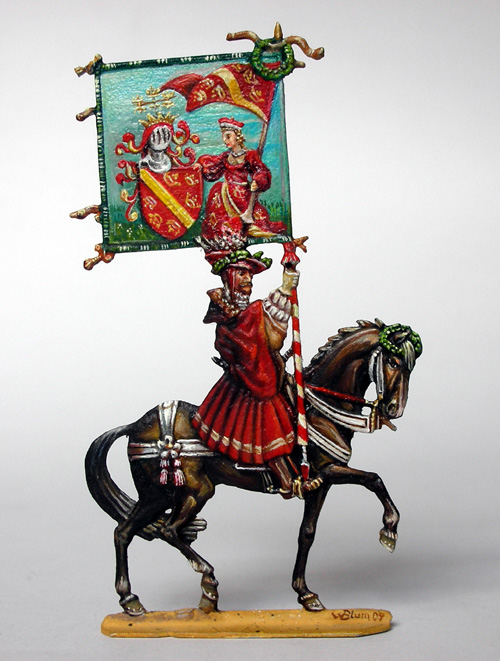 |
|
|
Portastendardo di Massimiliano I di Baviera Standard Bearer of Maximilian I of Bavaria |
Cavaliere XVI sec (figura
Kilia, incisione L.Frank) XVI century knight (Kilia figure, engr. by L.Frank) |
Gerd Wiemers
| Gerd Wiemers colleziona e dipinge figure
dal 1976. Ha cominciato con i tutto tondo 54 mm editi da TRADITION di
Londra. Dopo pochi anni Ŕ passato ai piatti. Ama dipingere figure in 30
mm e realizzare diorami un po' in tutte le epoche. Gerd usa colori ad
olio, anche se ha fatto qualche esperimento con gli acrilici. Qualche
volta compra figure dipinte per studiarle e migliorare la propria
tecnica pittorica. Per i diorami, si fa ispirare spesso da Spitzweg e
Ludwig Richter. Dal 2001 Ŕ presidente della associazione di figurini" Zinnfigurenfreunde Bremen-Oldenburg " |
Gerd Wiemers has been collecting and
painting figures since 1976. He started with 54mm ronde boss
produced by TRADITION of London. A few years later switched to flat
tin figures.
He loves to paint 30mm figures and
build up dioramas nearly in all eras . Gerd uses traditional oil
paints, even if he experimented acrylics too . He buys sometimes
painted figures in order to study and improve his own painting
technique. As for dioramas, he gets much inspiration by Spitzweg and
Ludwig Richter.
Since 2001 he is the chairman of
the tin figures Association " Zinnfigurenfreunde
Bremen-Oldenburg "
|
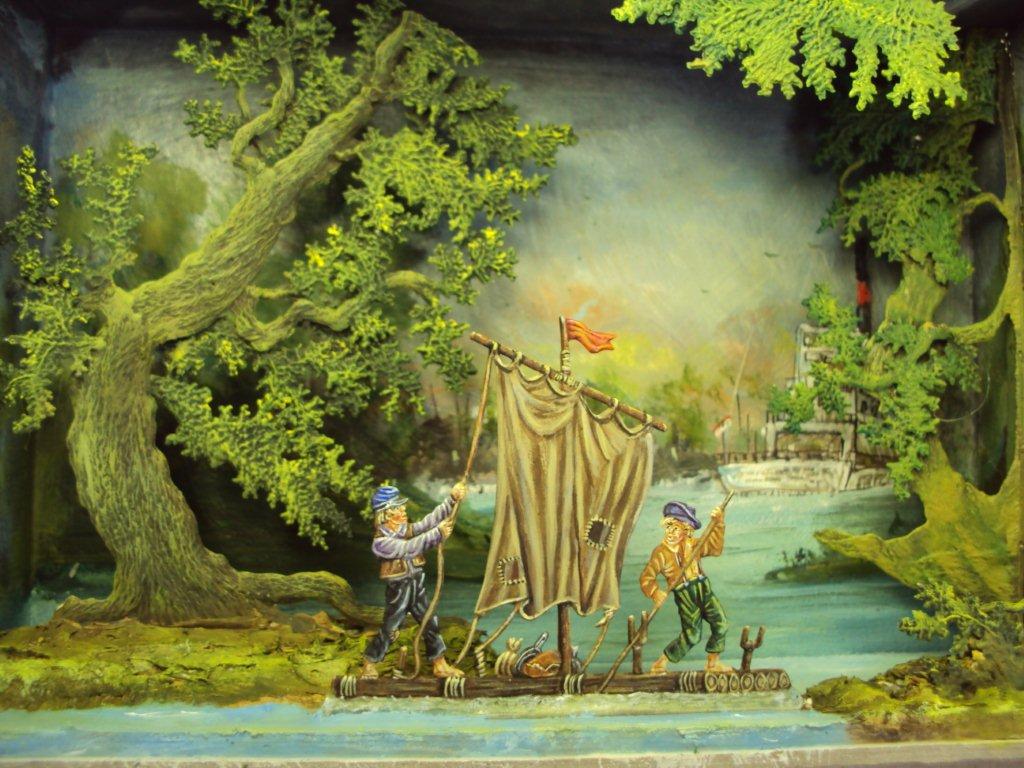 |
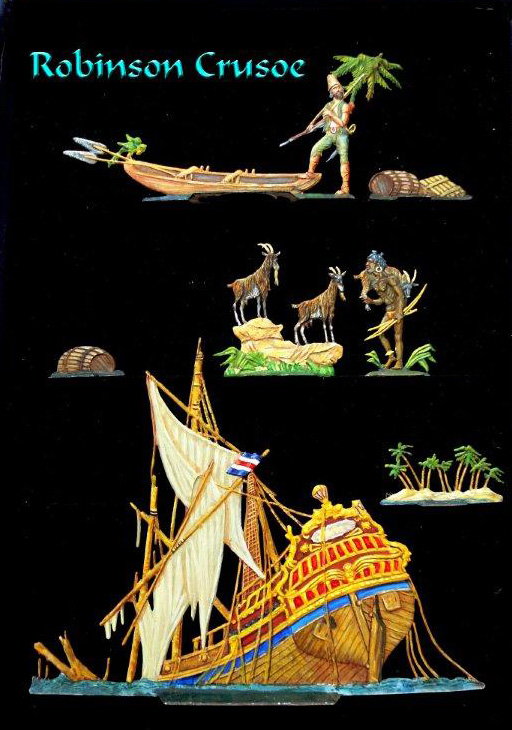 |
| Huckelberry Finn | Robinson Crusoe |
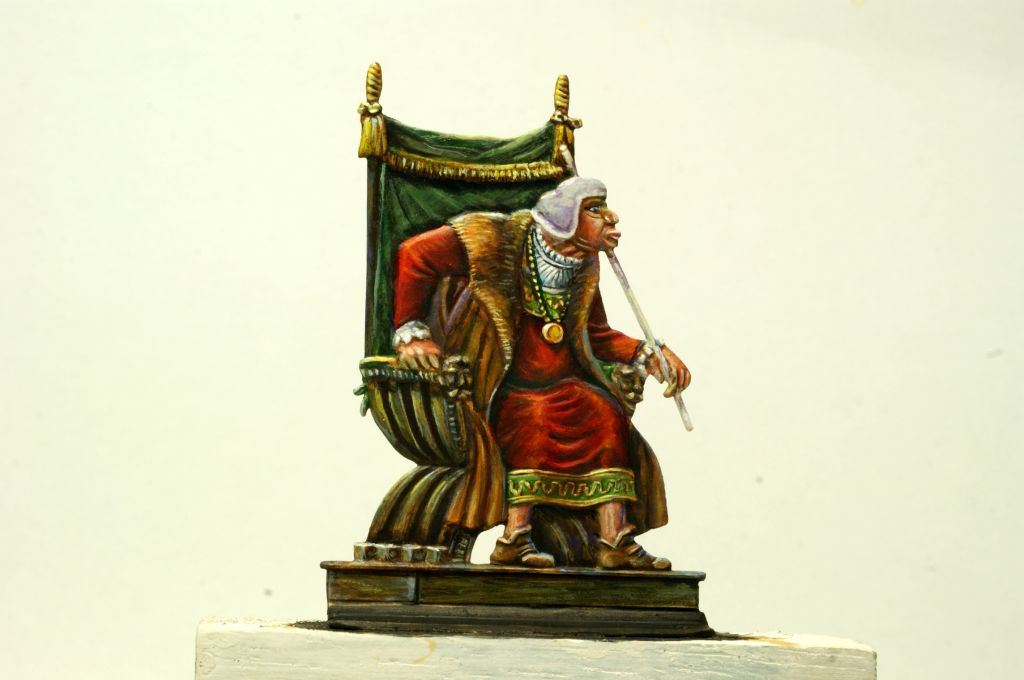 |
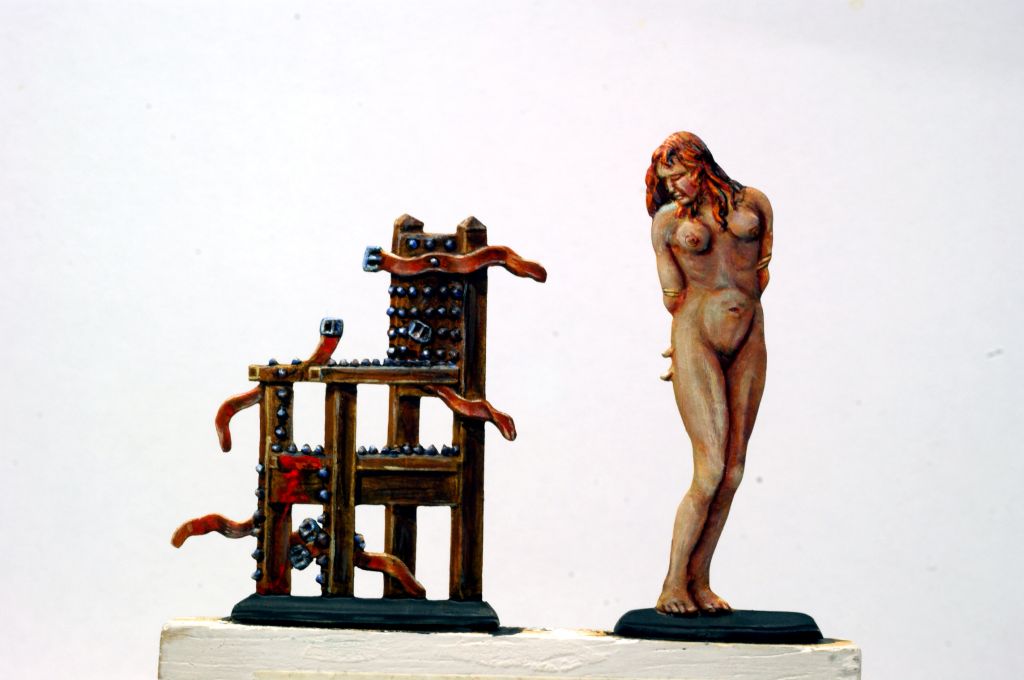 |
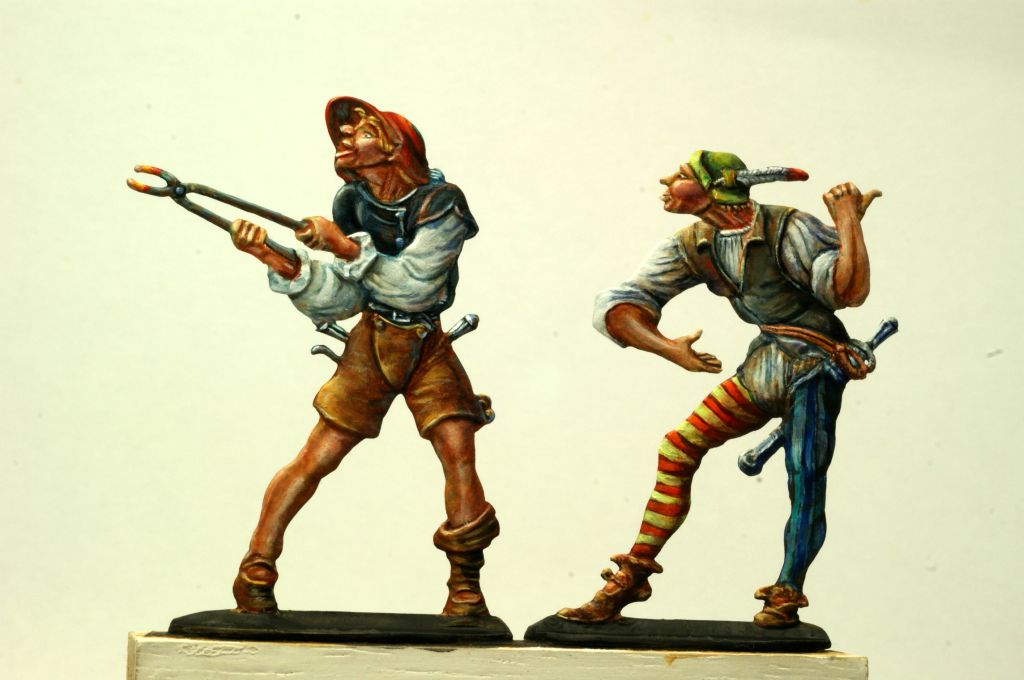 |
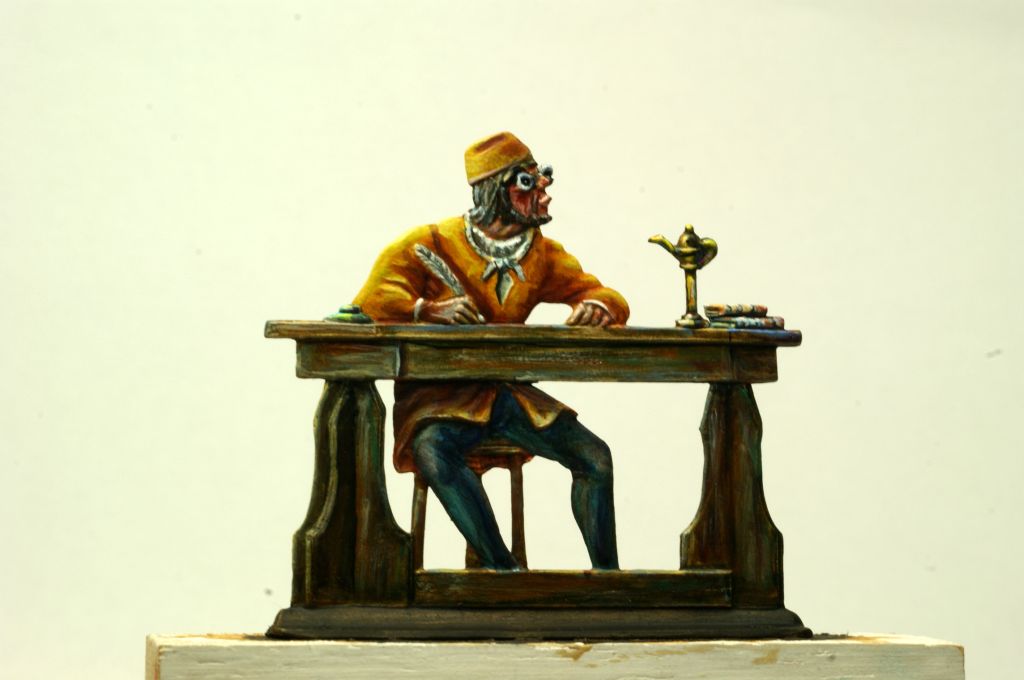 |
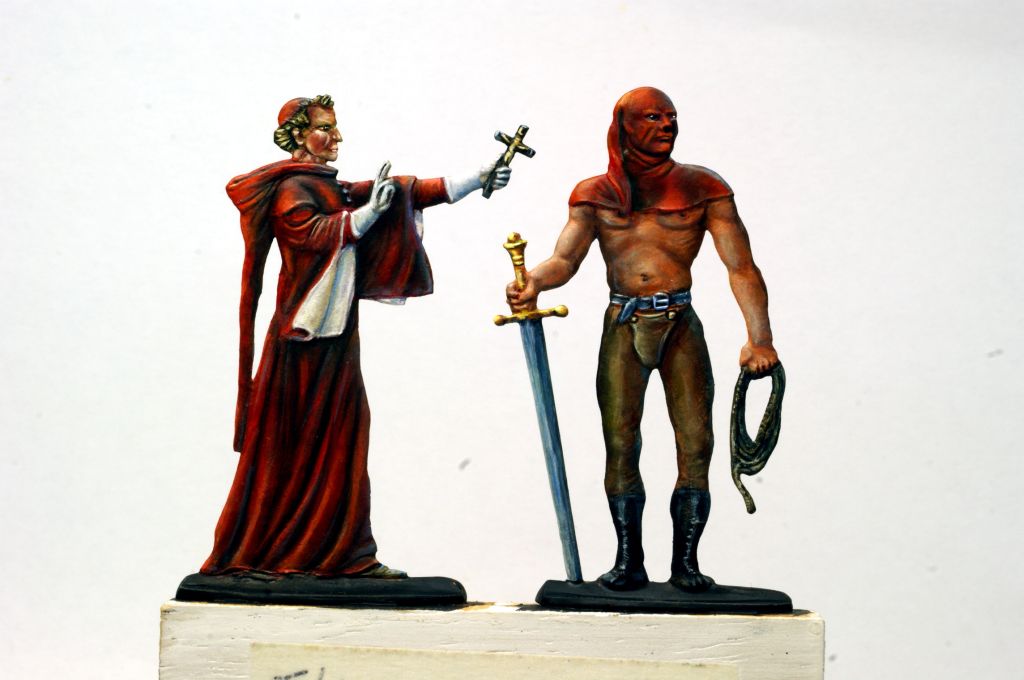 |
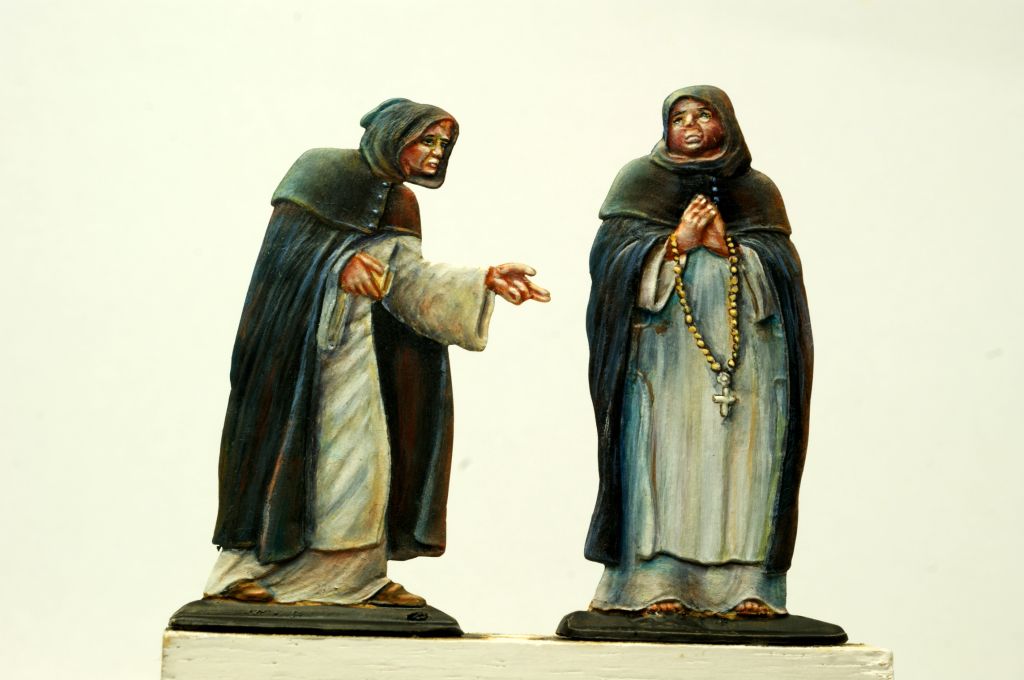 |
|
Inquisizione (incisione Franz Karl Mohr) |
||